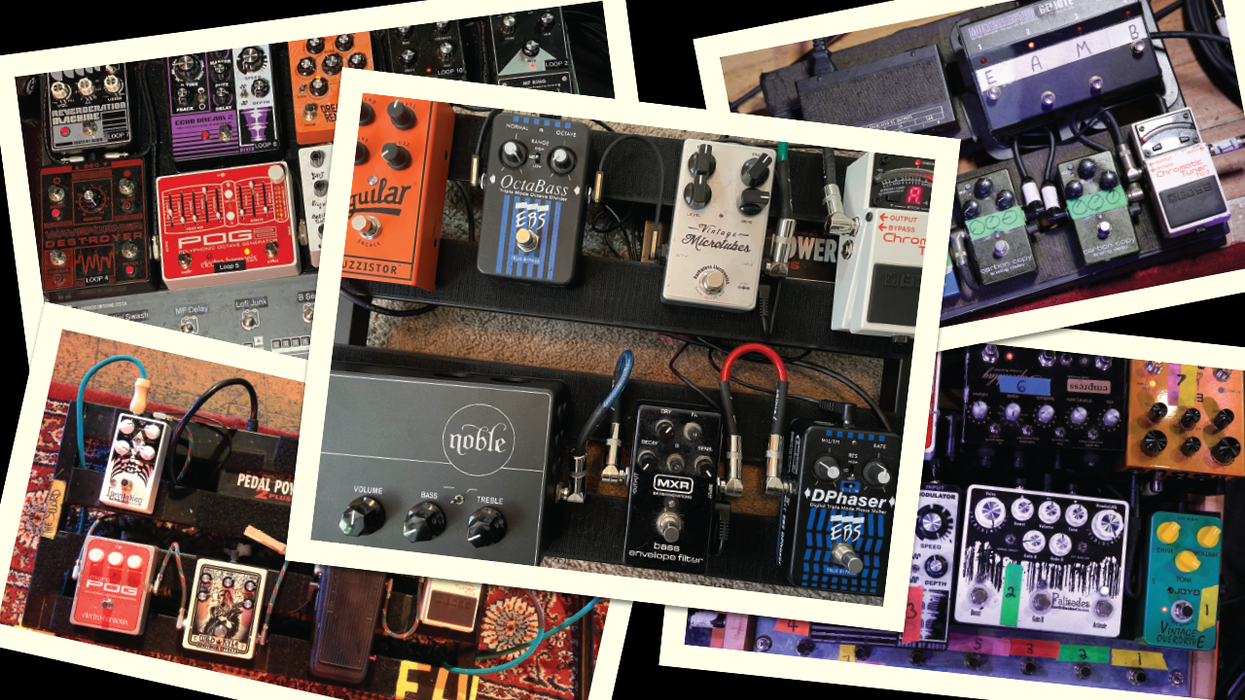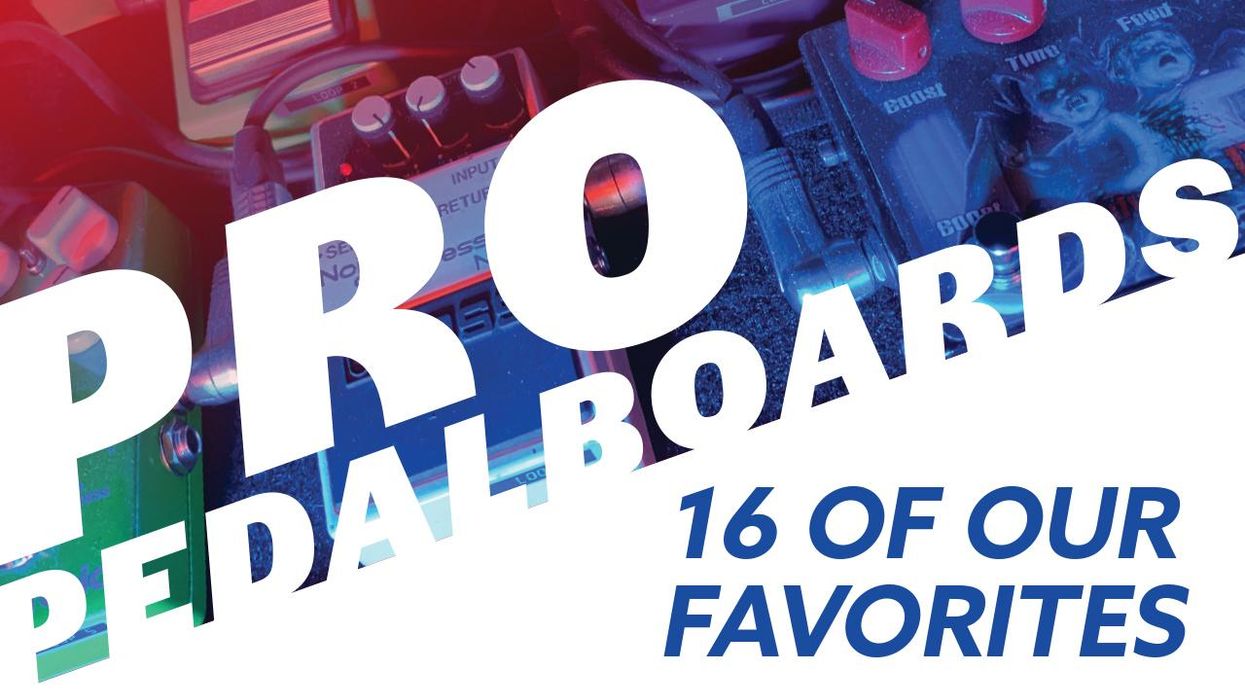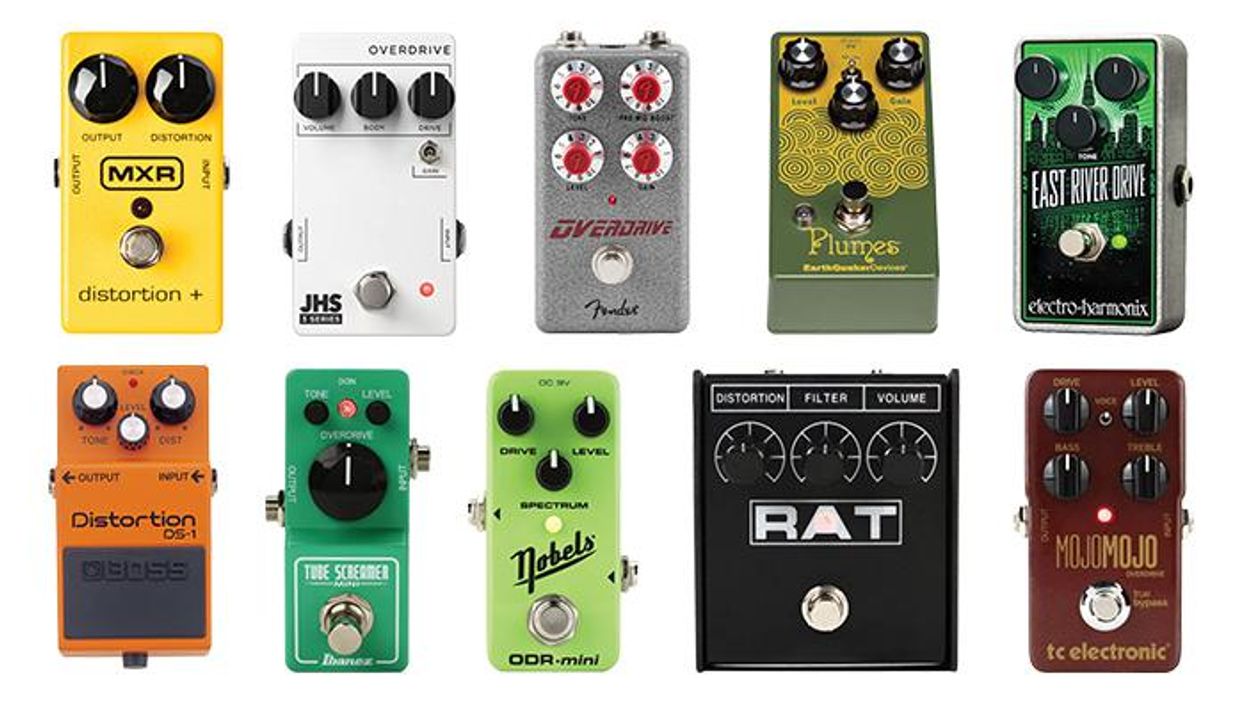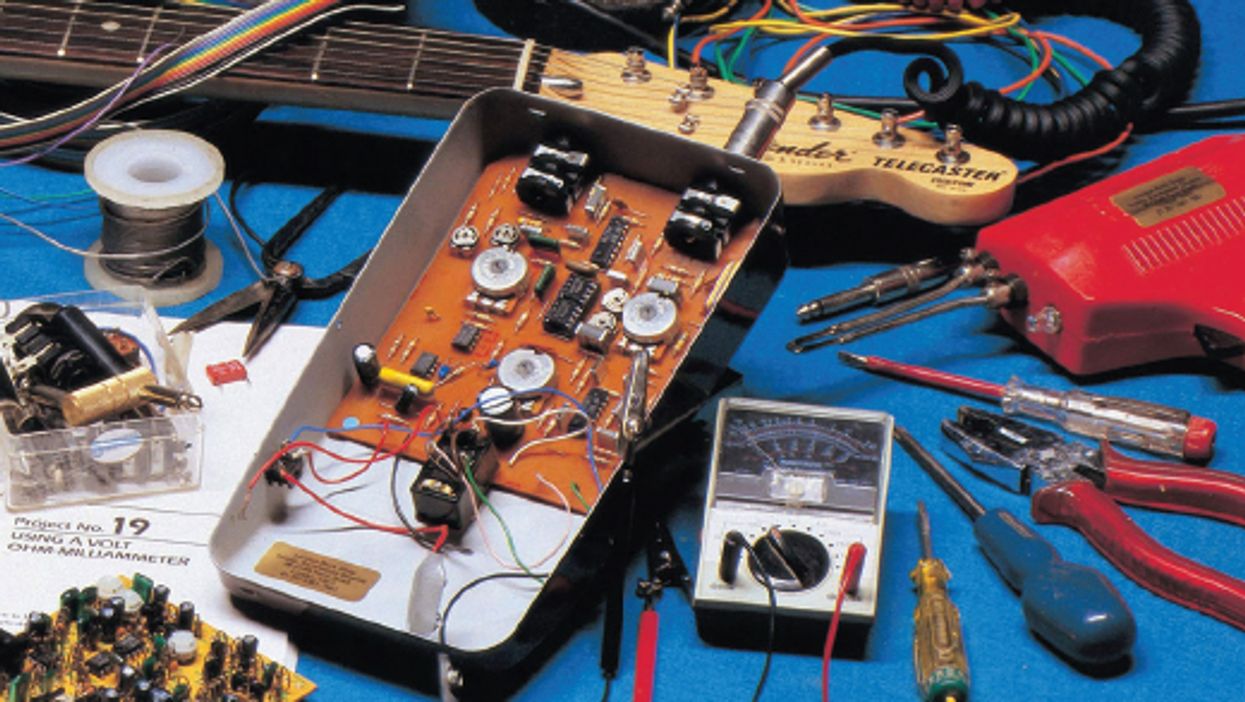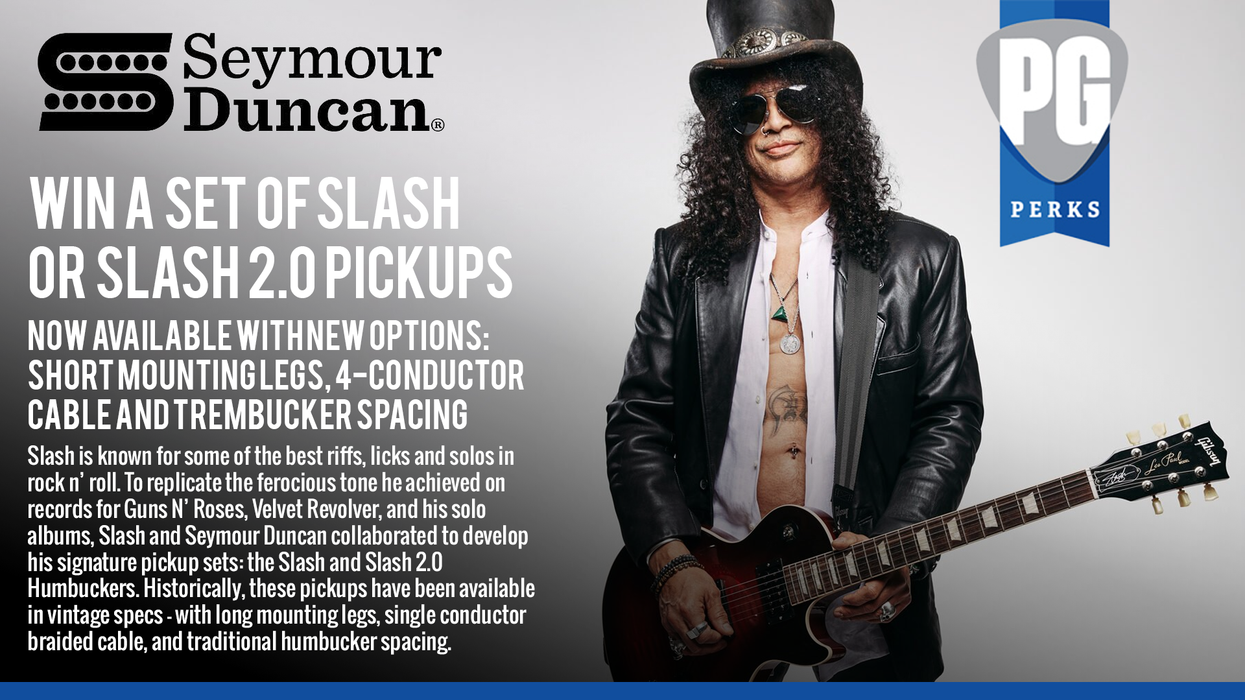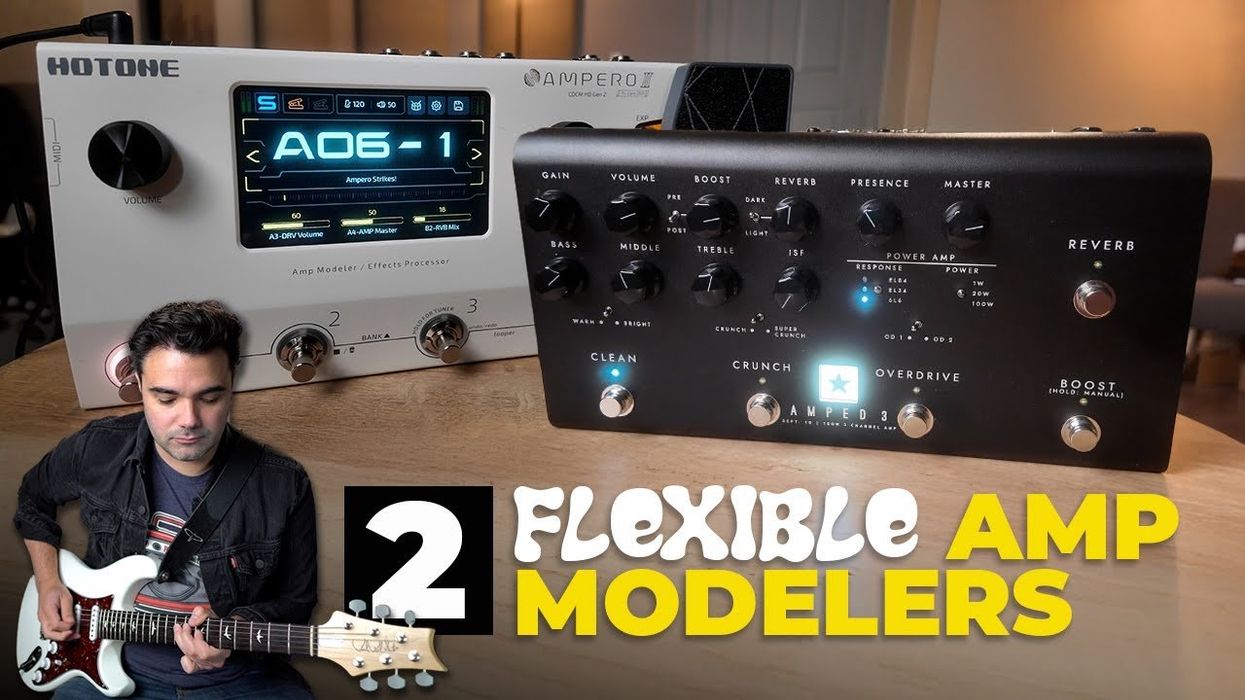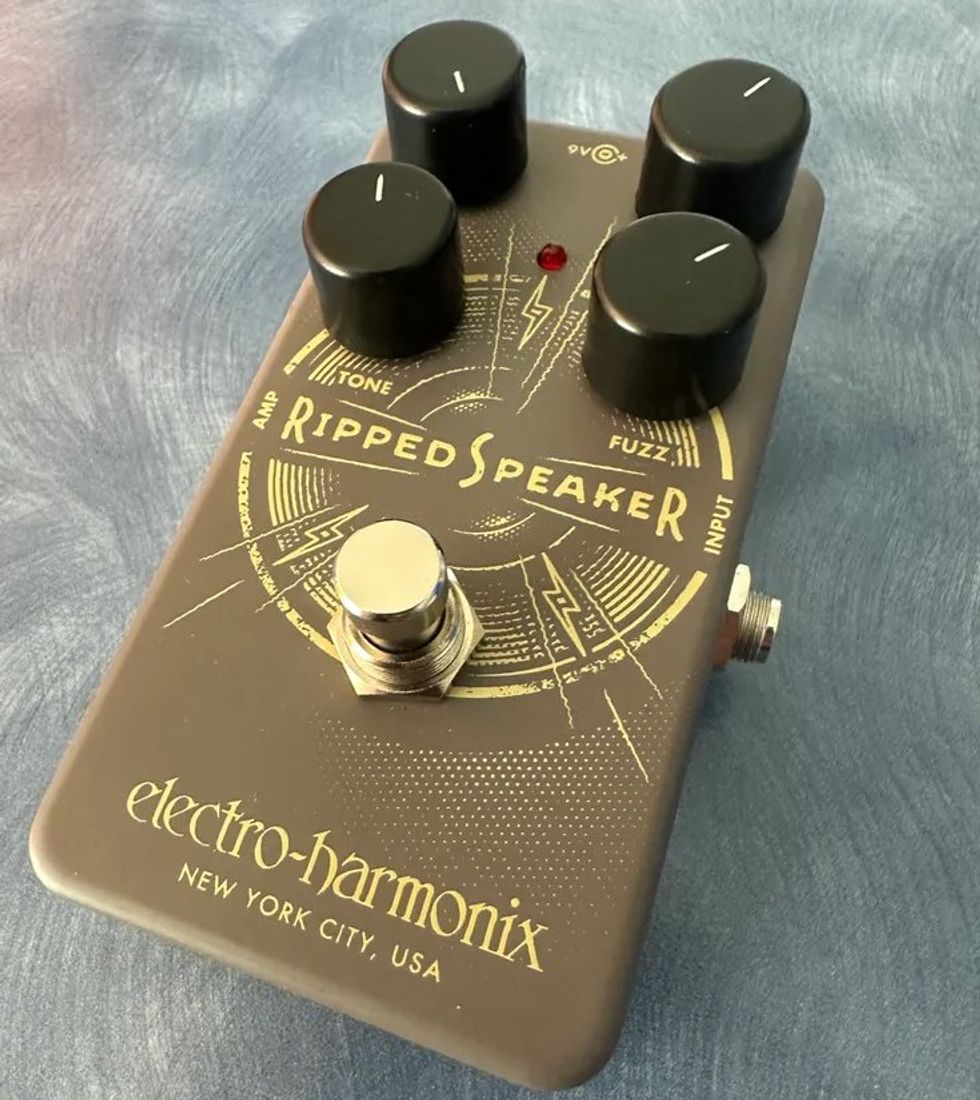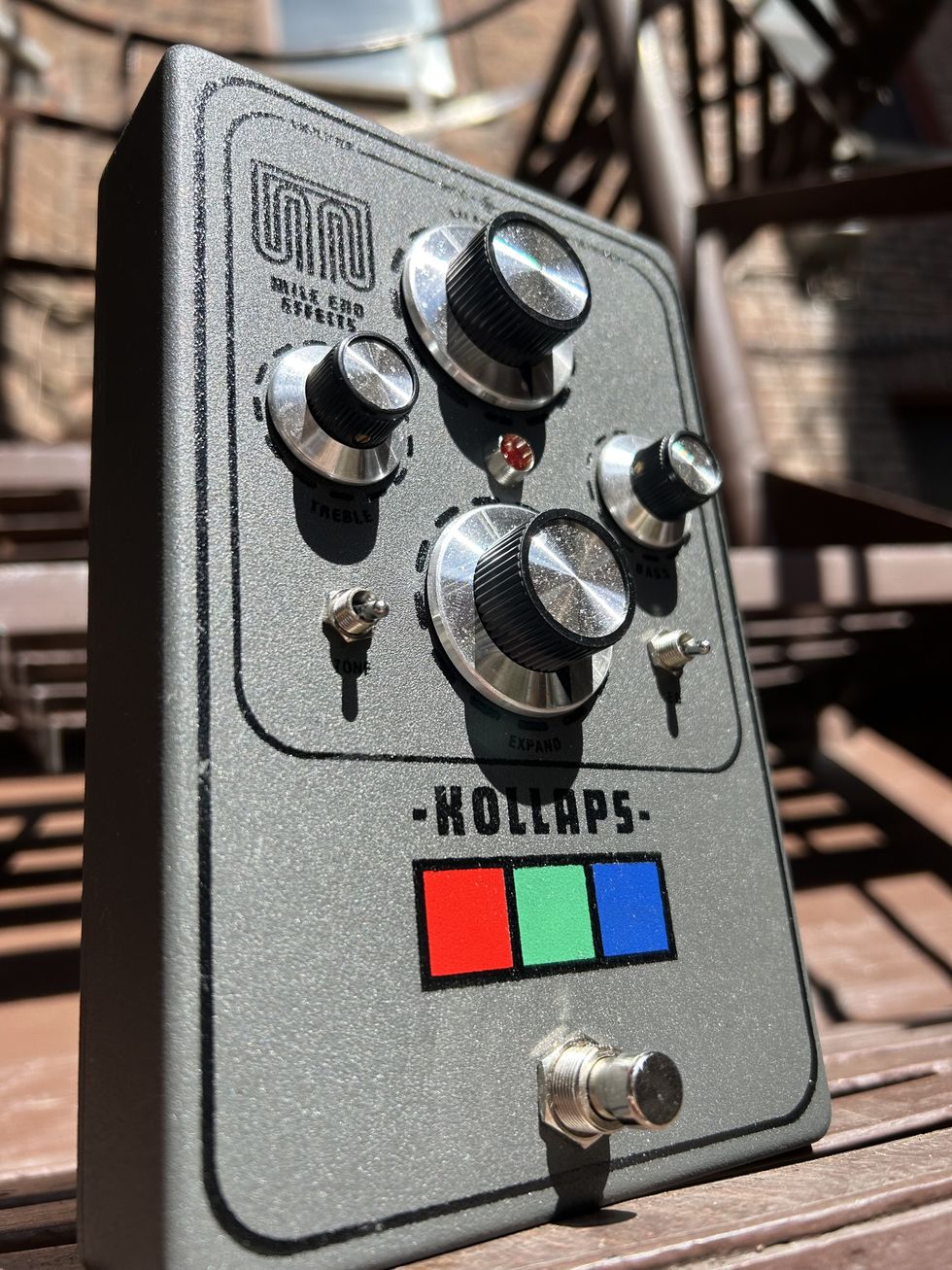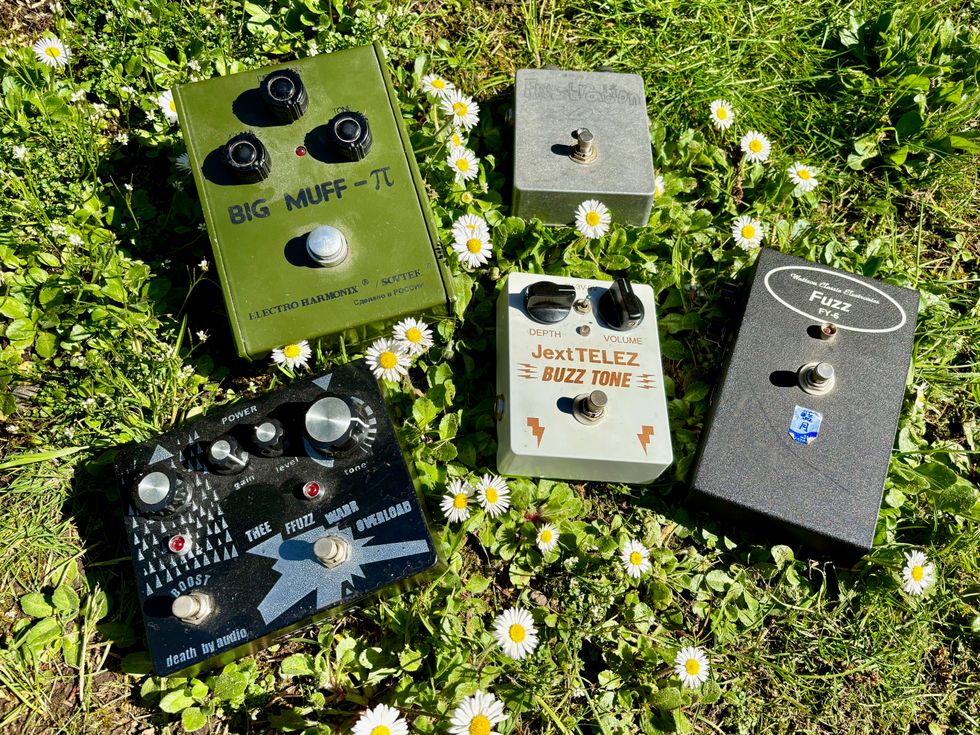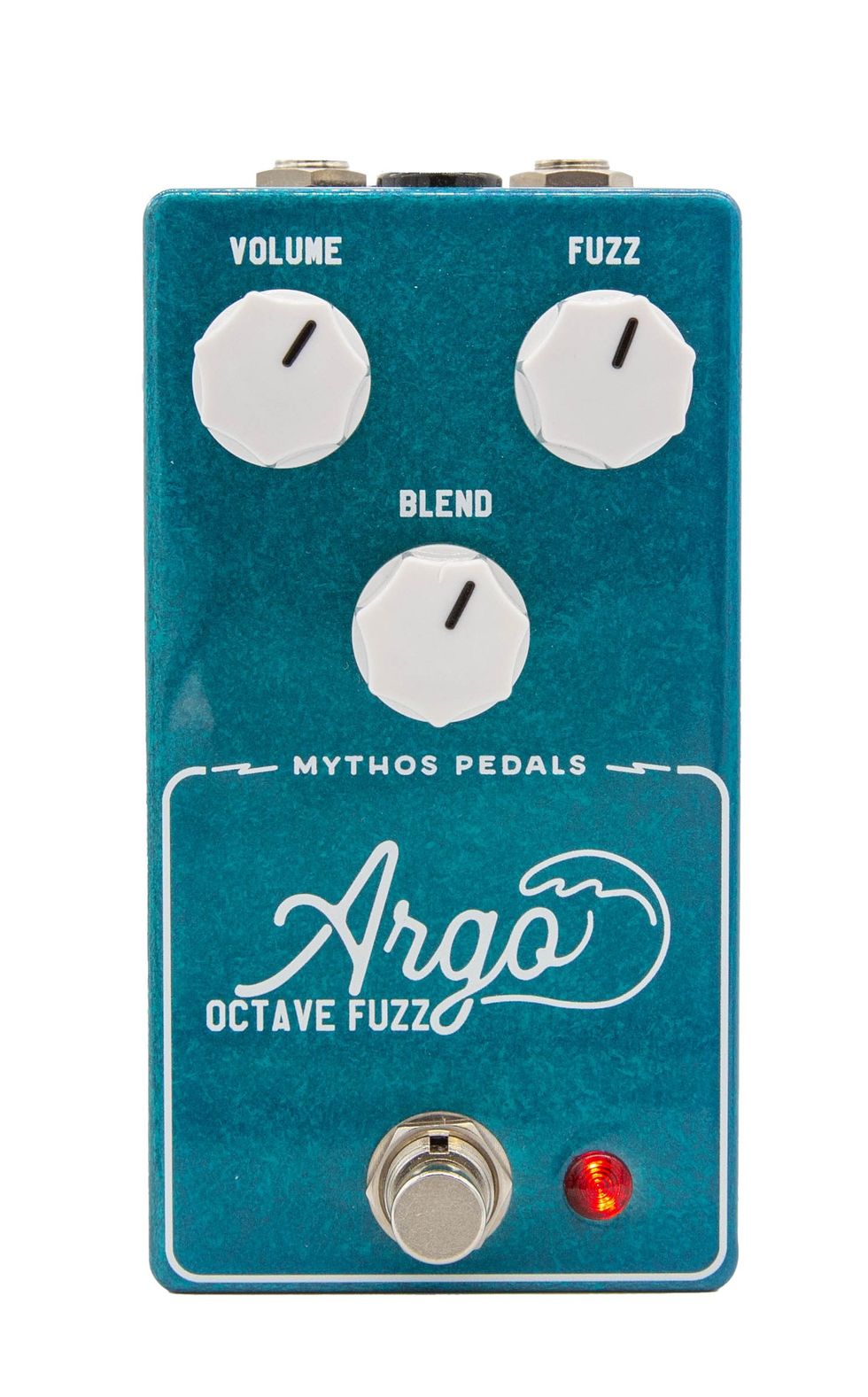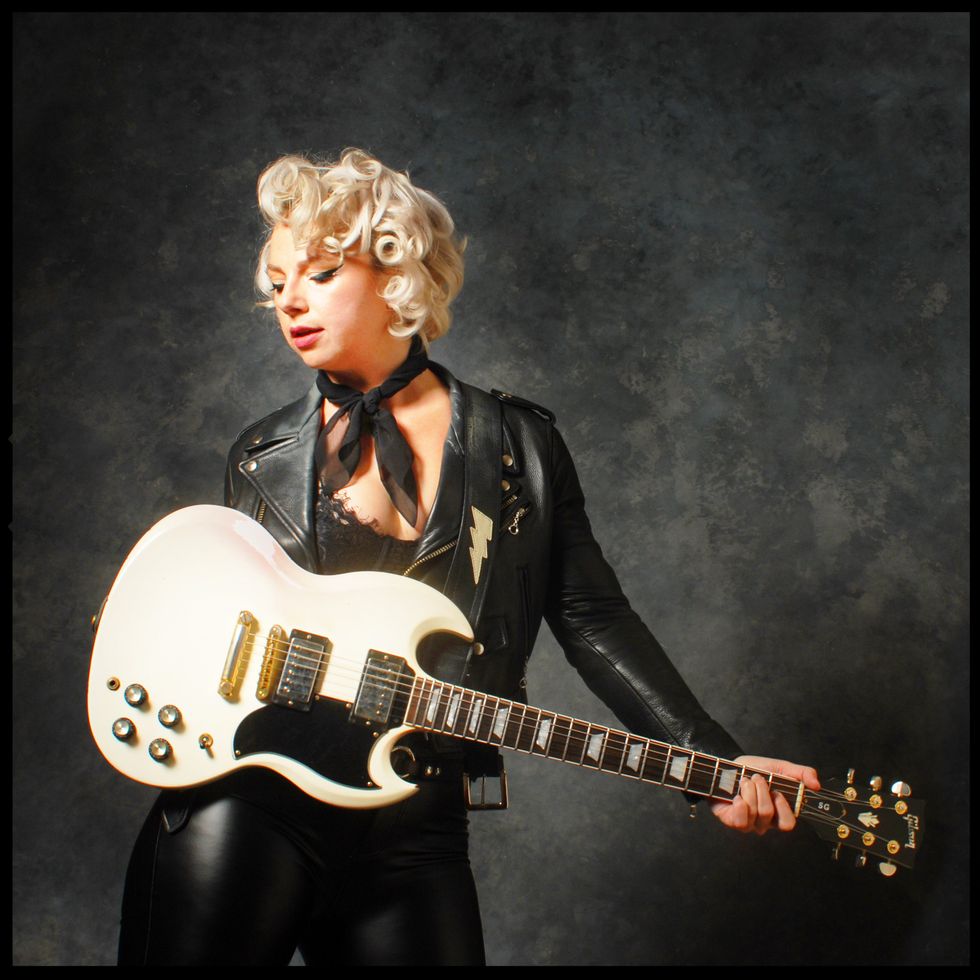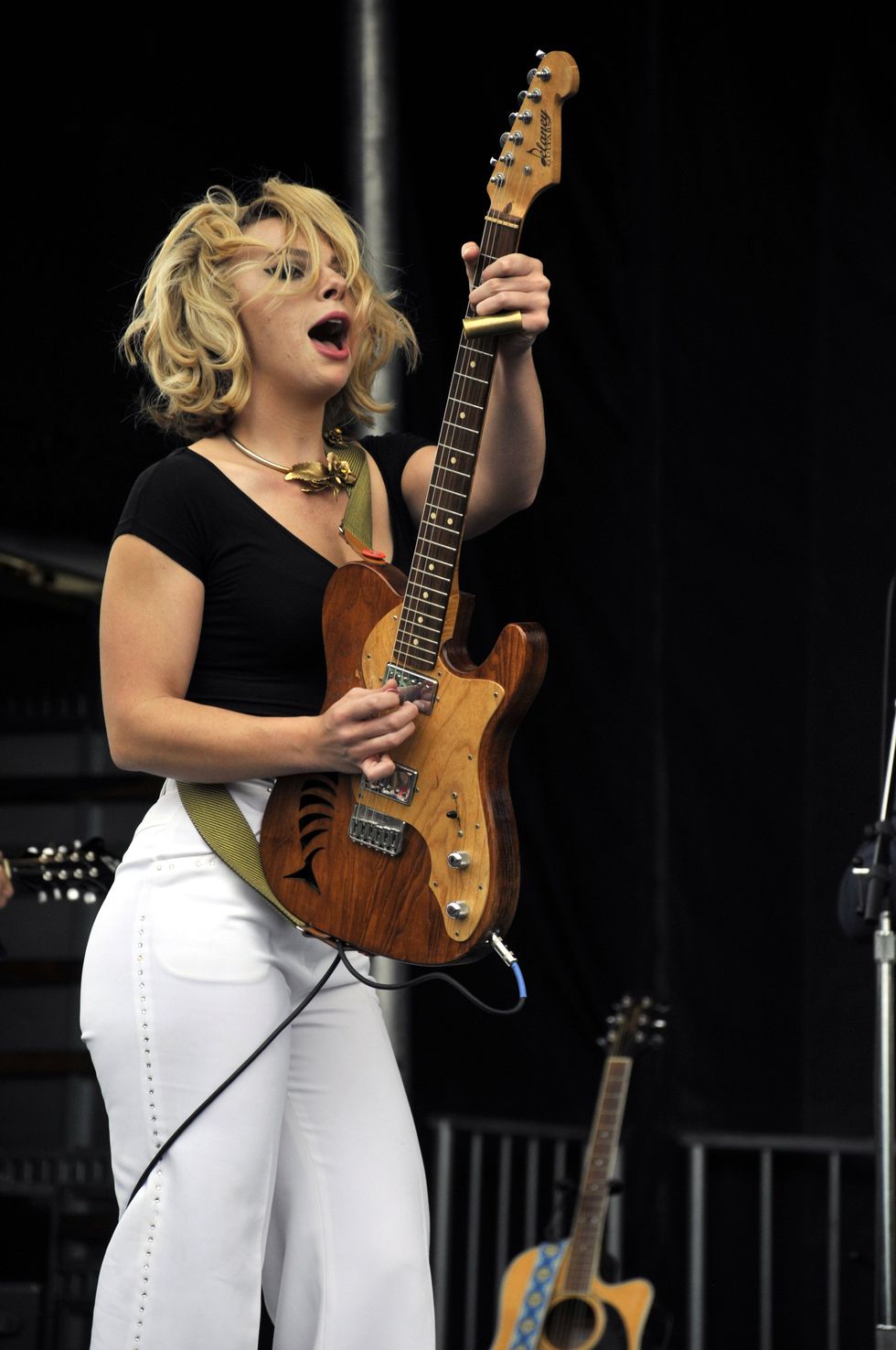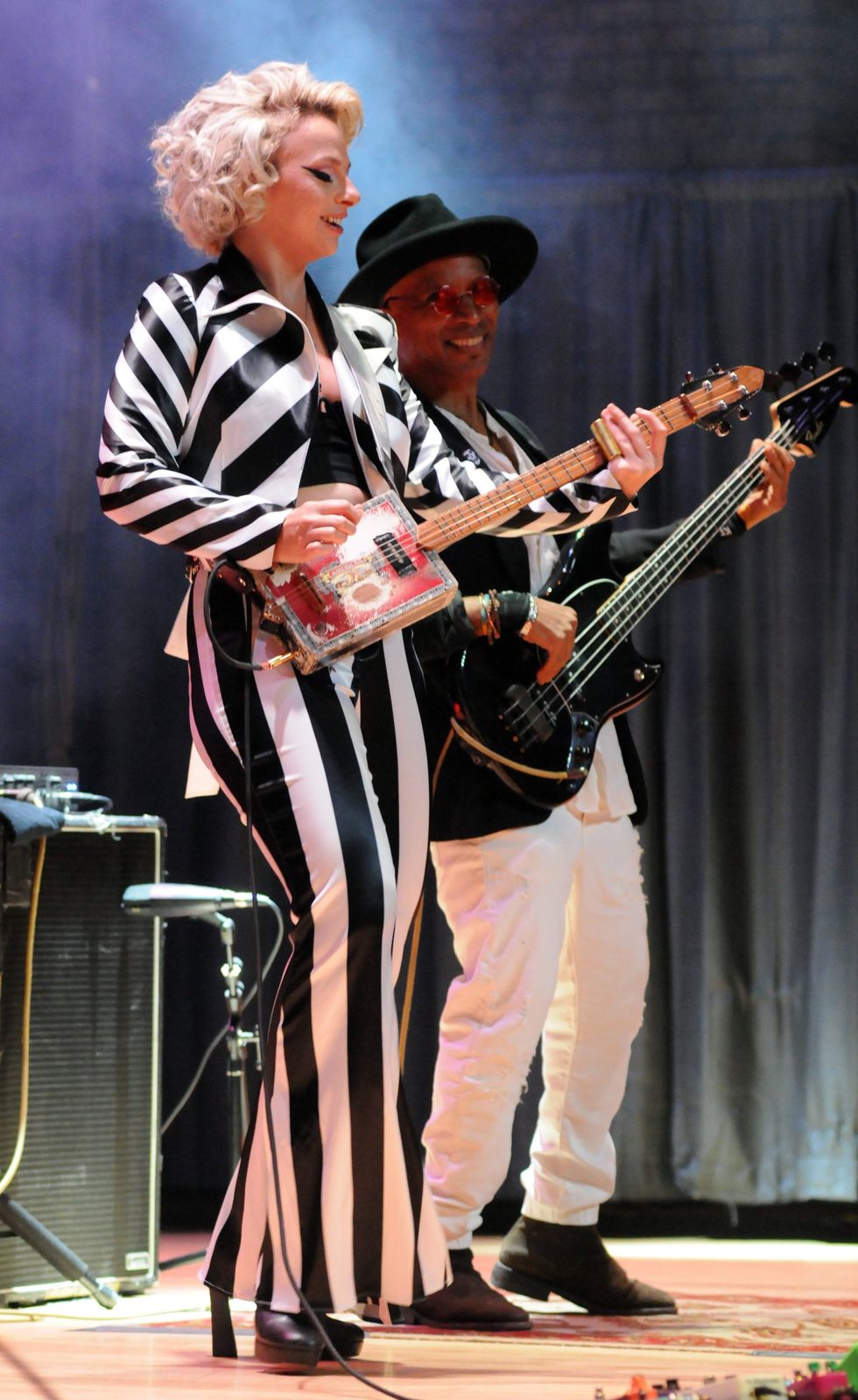The bad news: Covid put in-person Rig Rundowns on hold till mid 2021. The good news? Zoom episodes were every bit as compelling! Here are our favorite stomp stations from the last year.
Nicole Row
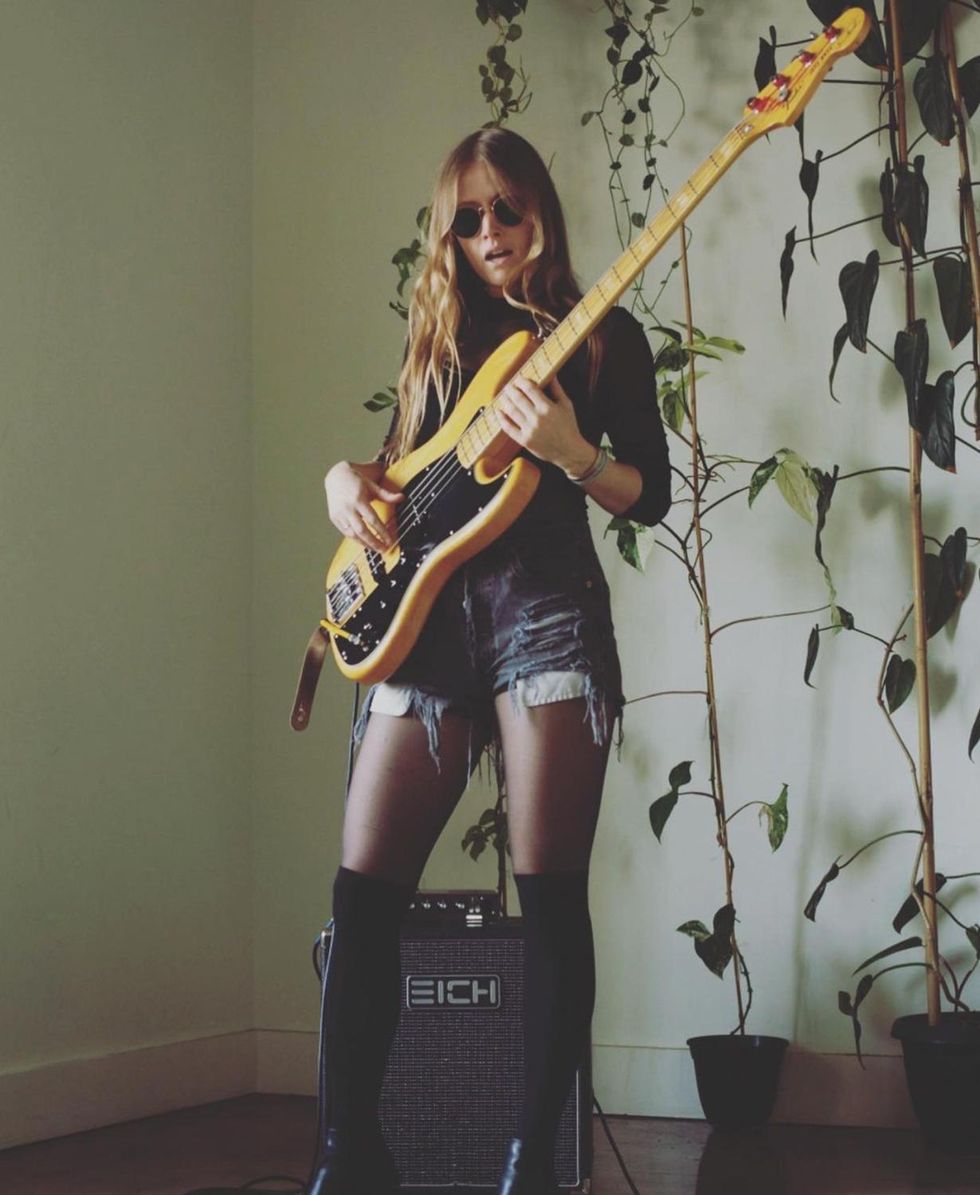
It may not look like a lot, but Panic At the Disco bassist Nicole Row (who’s also a prolific session player) says these half-dozen pedals cover all the bases for any gig, session, or audition she might find herself at.
Nicole Row's Pedalboard
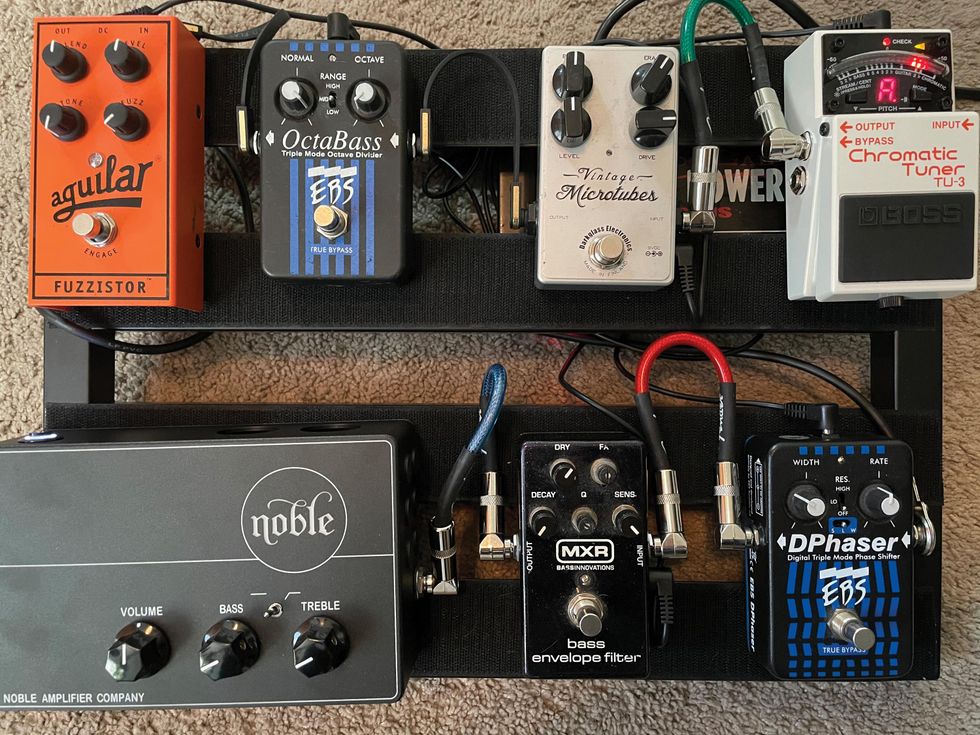
For Panic’s snarling indie-rock anthems, two of her most-stomped stomps are the Aguilar Fuzzistor and Darkglass Electronics Vintage Microtubes. Meanwhile, she often stacks an EBS OctaBass with other pedals to mimic vintage synth sounds. For silkier, “underwater” sonics, she engages an EBS DPhaser, and for funkier lines she uses an MXR Bass Envelope Filter. Her go-to for sending signal to the house board is a Noble Dual Vacuum Tube Preamp/DI Box.
Rig Rundown: Nicole Row
Kurt Ballou
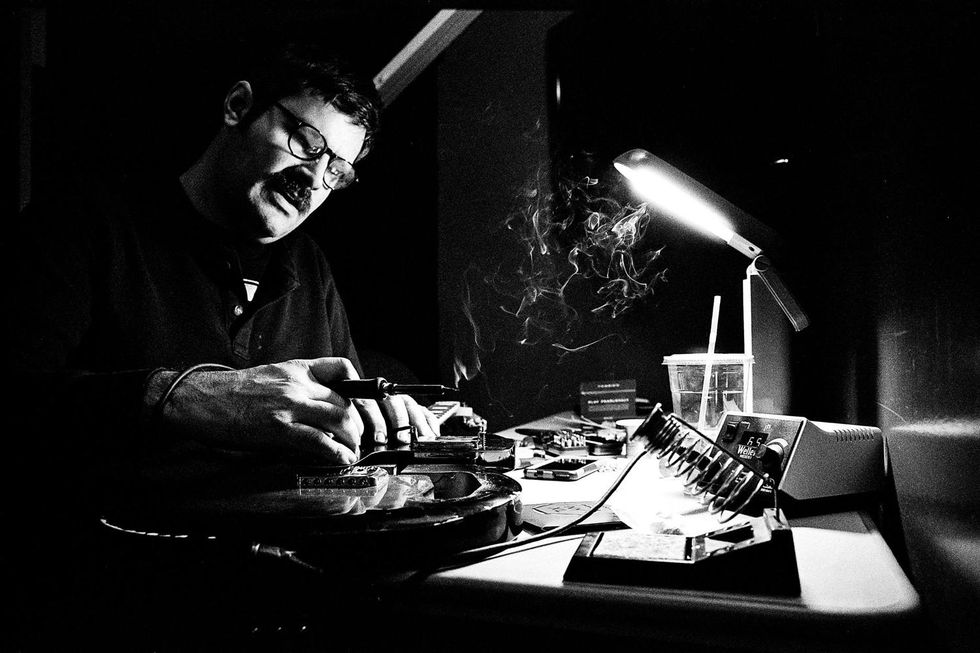
More often than not, famed metal producer/Converge guitarist/God City Instruments proprietor Kurt Ballou’s biggest pedal need is violent distortion—but he’s got plenty of other toys, too.
Kurt Ballou's Pedalboard
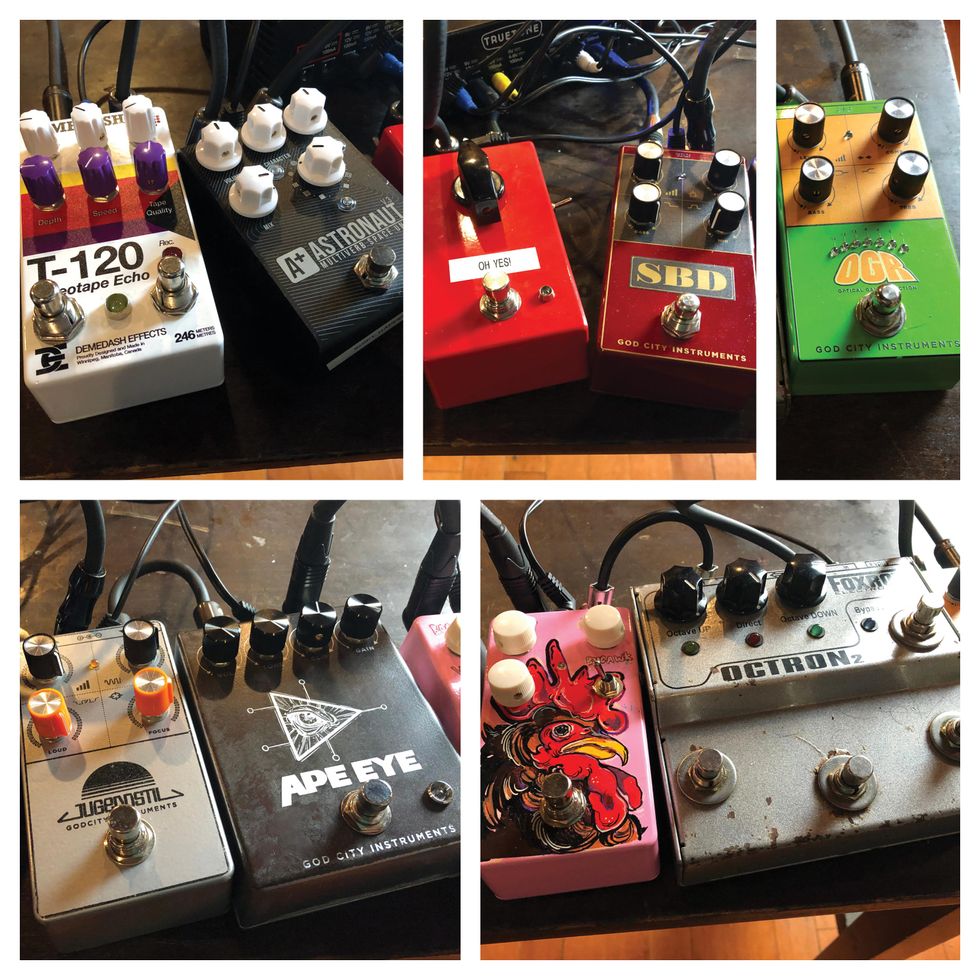
Going clockwise (from top left), we have a Demedash Effects T-120 Videotape Echo (“one of the coolest analog delay pedals”—when bypassed, holding down the left footswitch engages a momentary freeze/shimmer/oscillator), then a Shift Line A+ Astronaut III Multiverb Space Unit from Russia. The red, single-knob God City Instruments design is a “mid-forward, ultimate thrashy, djenty, clanky, articulate, heavy guitar pedal,” while the God City SBD (Super Beatle Distortion) features an active mid boost in front of its fuzz circuit and gonzo bass after it. The GCI OGR (Optical Gain Reduction) is a compressor that Ballou uses on every bass track recorded at God City Studio, while the Foxrox Electronics Octron2 comes in handy for thorny solos bristling with weird overtones and elastic ghost notes. Inspired by the Rangemaster, the GCI Crimson Cock treble booster has an added range control and a switch that adds a Big Muff-style gain stage at the end of the circuit. Lastly, the GCI Ape Eye is based on a vintage API 2520 op amp, and the GCI Jugendstil is a silicon fuzz that Ballou says stands at the crossroads between ’90s British shoegaze and ’90s Swedish death metal.
Rig Rundown - Kurt Ballou
Bones Owens
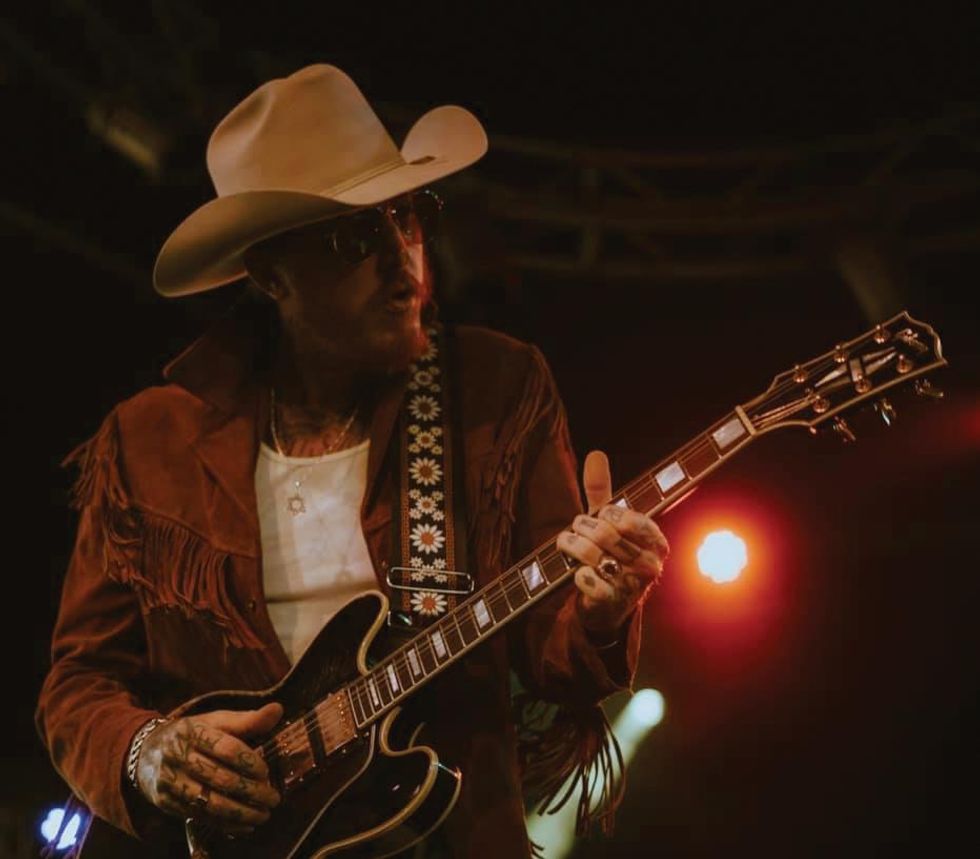
Alt-roots rocker Bones Owens’ signal first hits a Boss TU-3 tuner, then a Spaceman Saturn V Harmonic Booster, which is always on. After that, the signal zips into a Pete Cornish A/B/C amp splitter, whose A line provides rumbling bass by feeding an Electro-Harmonix Micro POG (used for octave down only), a “tall font” EHX Big Muff (rehoused by Mike Hill), and a Tech 21 SansAmp Bass Driver/DI, which in turn feeds both Owens’ Hiwatt DR103 head and a mixing or recording console. Pre-Covid, the splitter’s B path featured one effect—an Echopark Echodriver preamp—which then fed Owens’ Echopark Vibramatic 4T5A amp, while the splitter’s C line would feature the bulk of Owens’ effects routed to a third amp.
Bones Owens' Pedalboard
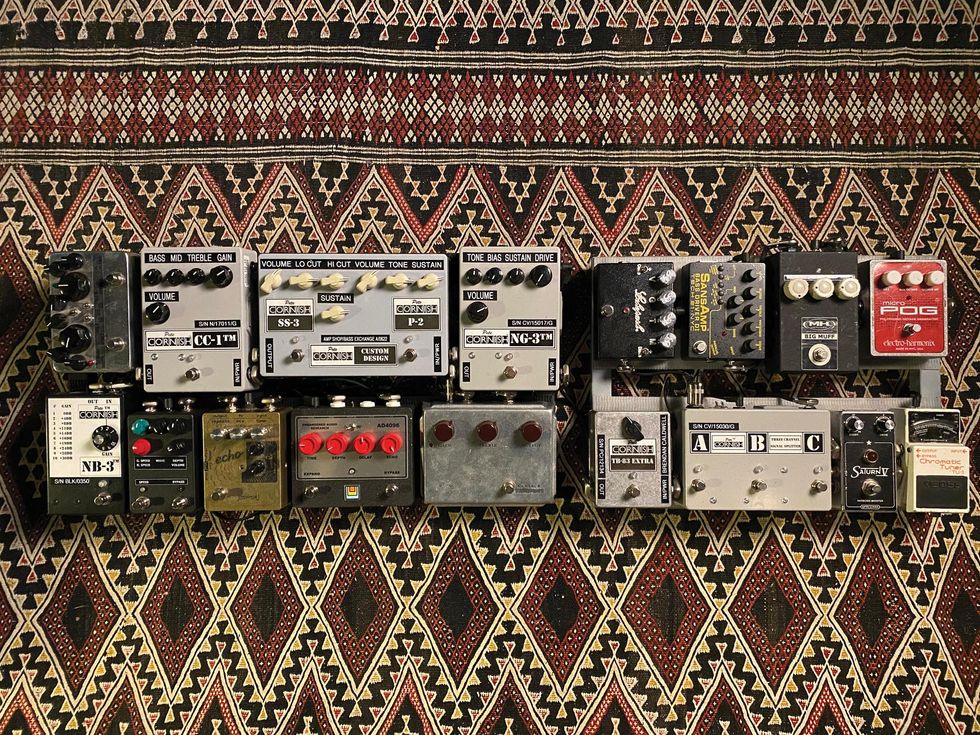
However, at the time of our Rig Rundown only the Hiwatt and Echopark amps were being used—so his C-line stompboxes were also being routed to the Echopark head. These include a plethora of Cornish gear—a TB-83 Extra treble ooster, an NG-3 fuzz, an SS-3 overdrive and P-2 distortion (in the same housing), a CC-1 boost/overdrive, and an NB-3 linear boost. Other noisemakers include a silver Klon Centaur, an Endangered Audio Research AD4096 analog delay, a Skreddy Pedals Skreddy Echo, a JHS-modded Boss TR-2 Tremolo (rehoused by Barry O’Neal at XACT Tone Solutions), and a Toneczar Halophaze.
Rig Rundown - Bones Owens
Ariel Posen
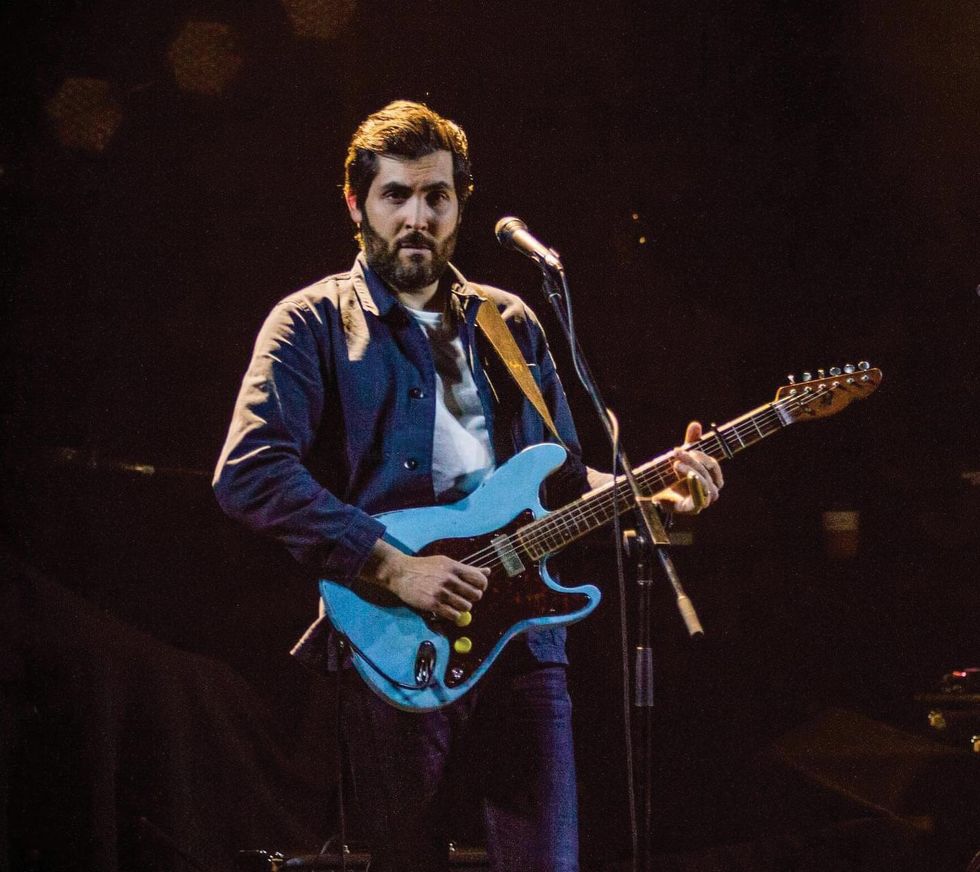
Canadian slide master Ariel Posen toured and did session work with this setup for over a year before Covid shut everything down.
Ariel Posen's Pedalboard
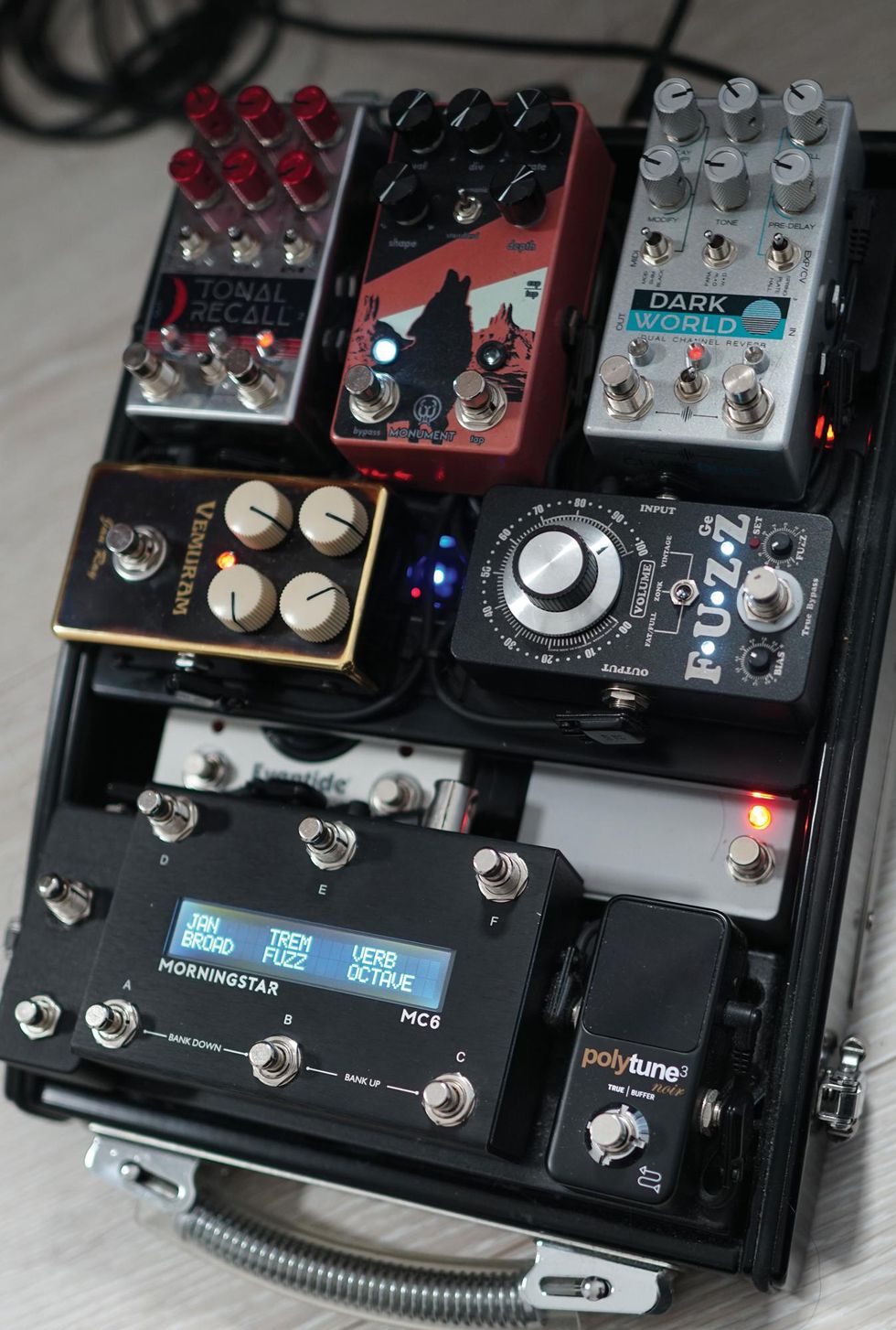
Starting at the top left, there’s a Chase Bliss Tonal Recall, a Walrus Audio Monument, and a Chase Bliss Dark World. There’s also a Vemuram Jan Ray overdrive, a KingTone Germanium miniFUZZ, a Morningstar Engineering MC6 MIDI Controller, and a TC Electronic PolyTune3 Mini Noir.
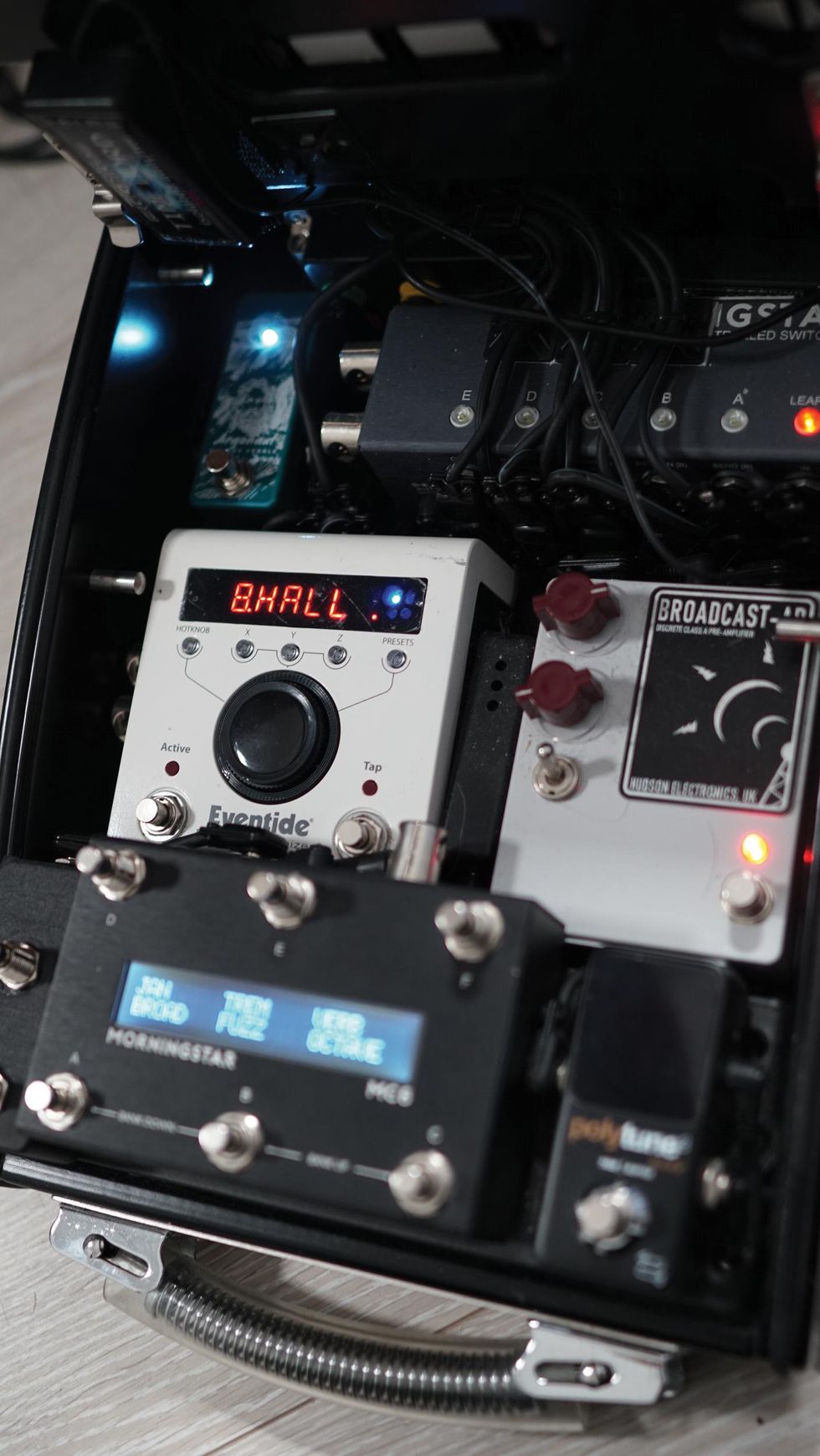
But wait … there’s more! The top panel of Posen’s board lifts to reveal a trio of stomps—a Mythos Pedals Argonaut Mini Octave (delivering up tones), an Eventide H9, and Posen’s signature Hudson Electronics Broadcast-AP, which is always on.
Rig Rundown - Ariel Posen
My Chemical Romance’s Frank Iero
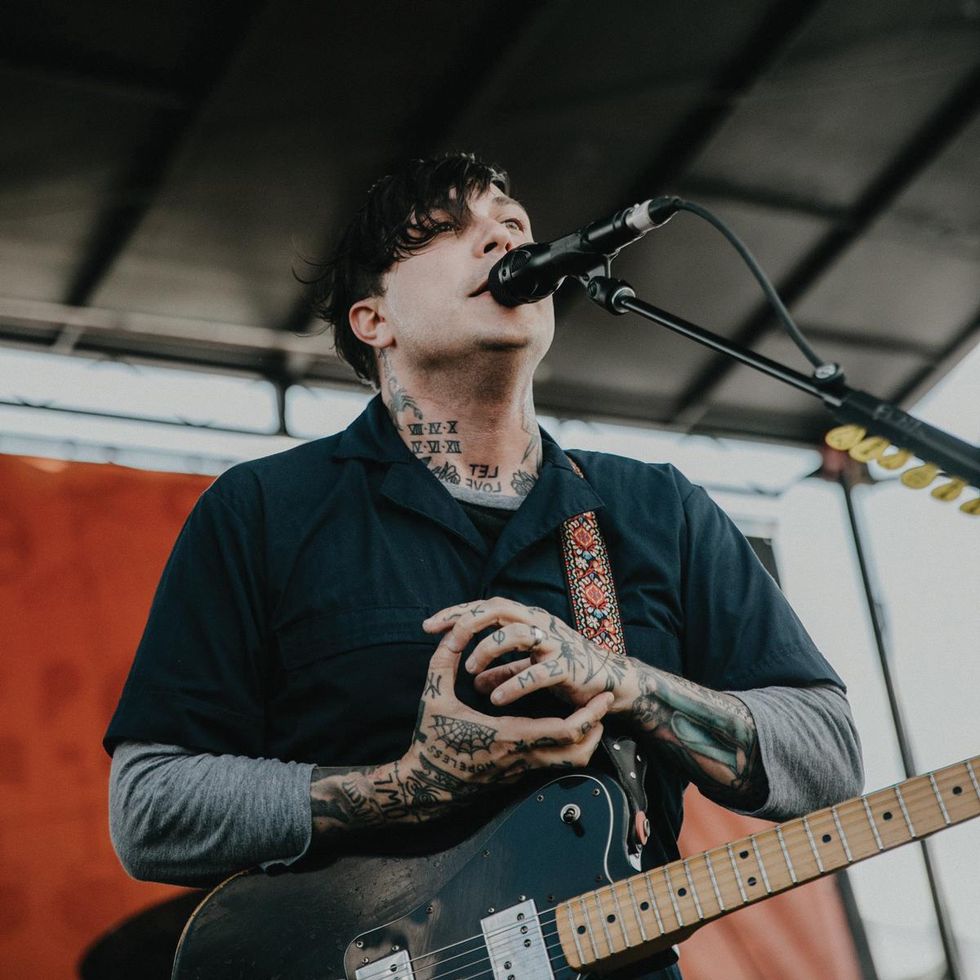
During the pandemic, My Chemical Romance rhythm meister Frank Iero’s pedalboard saw a lot of change as tone hunting became a mind-saving pastime. He has some mainstays, but at the time of our Rig Rundown not much was permanent.
Frank Iero's Pedalboards
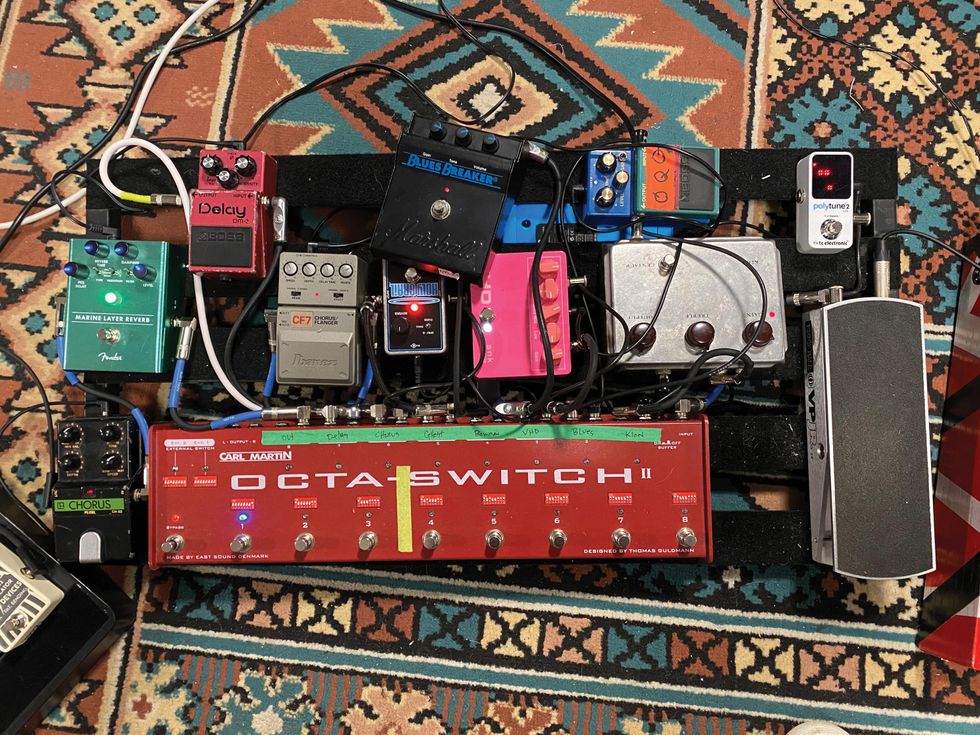
The board that was the closest thing to gig-ready had a Fender Marine Layer Reverb, a vintage Pearl CH-02 Chorus, an old Boss DM-2 Delay, an Ibanez CF7 Chorus/Flanger, and an Electro-Harmonix Holy Grail (left side). Meanwhile, the right side of the board was home to menace: a Marshall Blues Breaker, an SNK Pedals VHD distortion/preamp, a Keeley-modded Boss BD-2 Blues Driver, and a Klon Centaur. Everything was powered by a Strymon Zuma and controlled by a Carl Martin Octa-Switch MkII. His tuner was a TC Electronic PolyTune 2 Mini, and his volume pedal was an Ernie Ball VPJR.
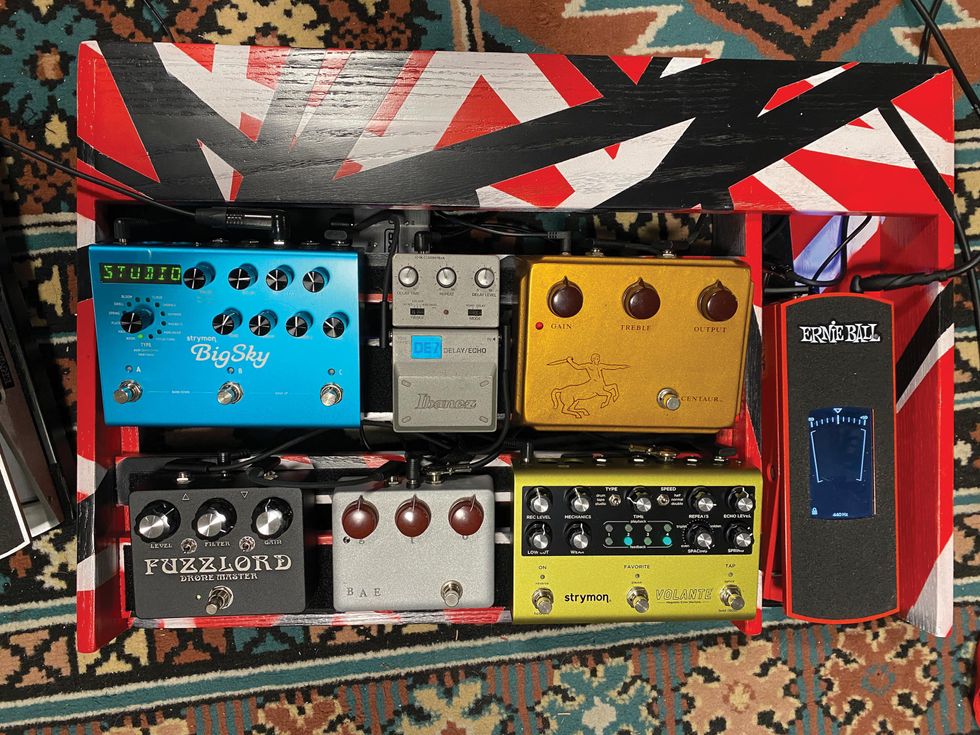
Here’s his mess-around-the-house board (with a fine tribute to EVH) that has a pair of Strymons (BigSky and Volante), an Ibanez DE7 Delay/Echo, gold Klon Centaur, Fuzzlord Effects Drone Master, Bowman Audio Endeavors The Bowman (company ran by Rig Rundown alumnus and Against Me! guitarist James Bowman), and an Ernie Ball VPJR Tuner Pedal.
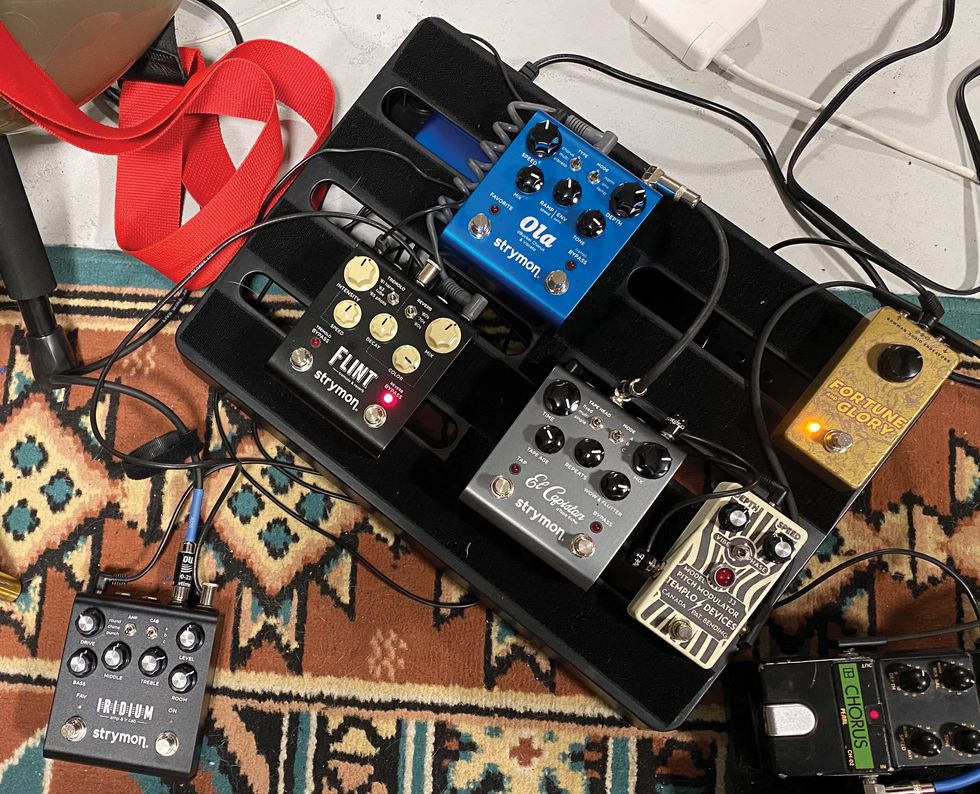
His recording board is made up of versatile staples including a 4-pack of Strymons (Ola, Flint, El Capistan, and Iridium), Bowman Audio Endeavors Fortune and Glory, and a Templo Devices Model 33 Supa vibrato.
Rig Rundown - My Chemical Romance's Frank Iero
Olivia Jean
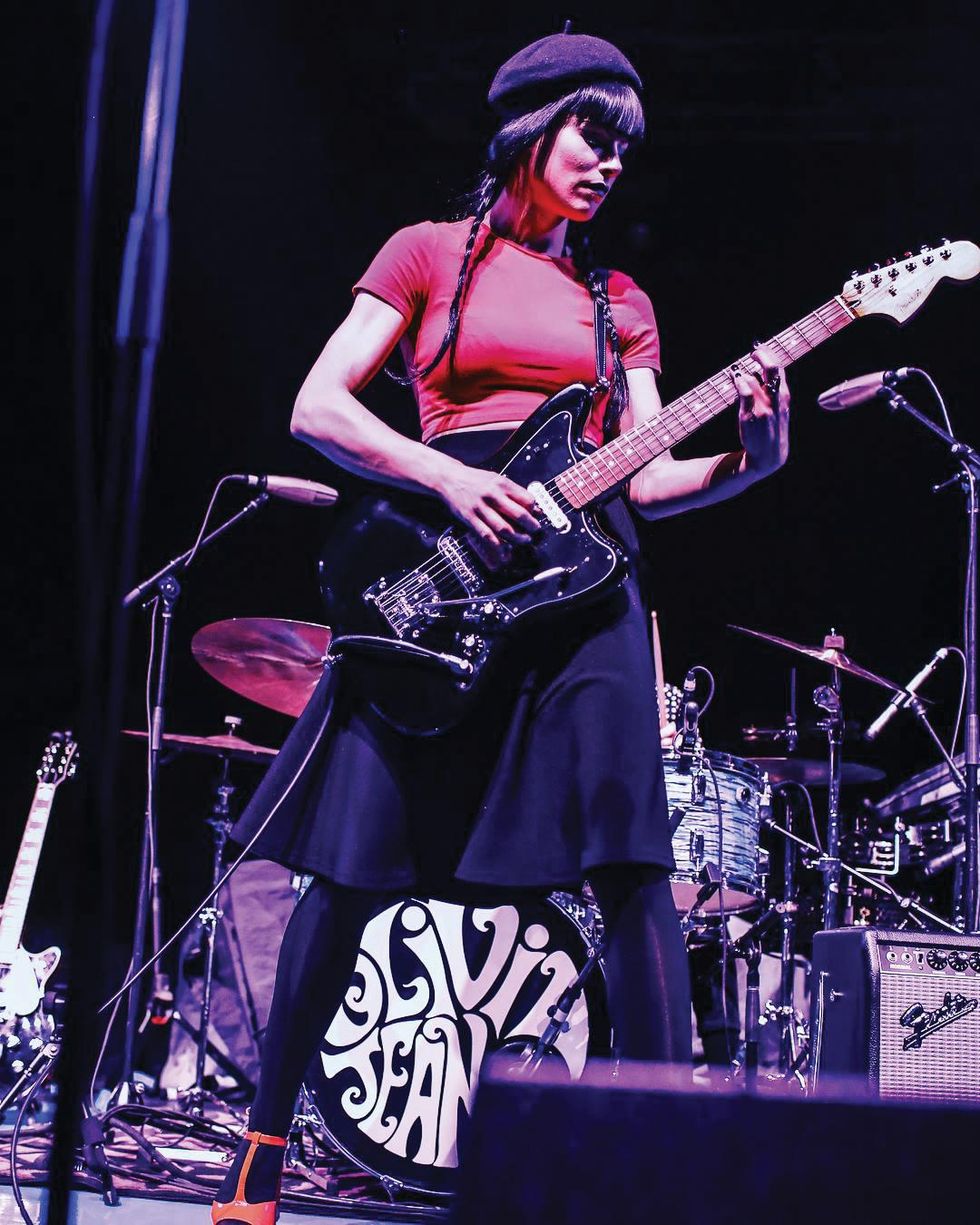
In addition to vibey guitar work, Third Man Records artist Olivia Jean dedicates much of her onstage energy and focus to singing—which means keeping pedalboard tap dancing to a minimum. Even so, her streamlined stomp station serves up an enviable variety of tones.
Olivia Jean's Pedalboard
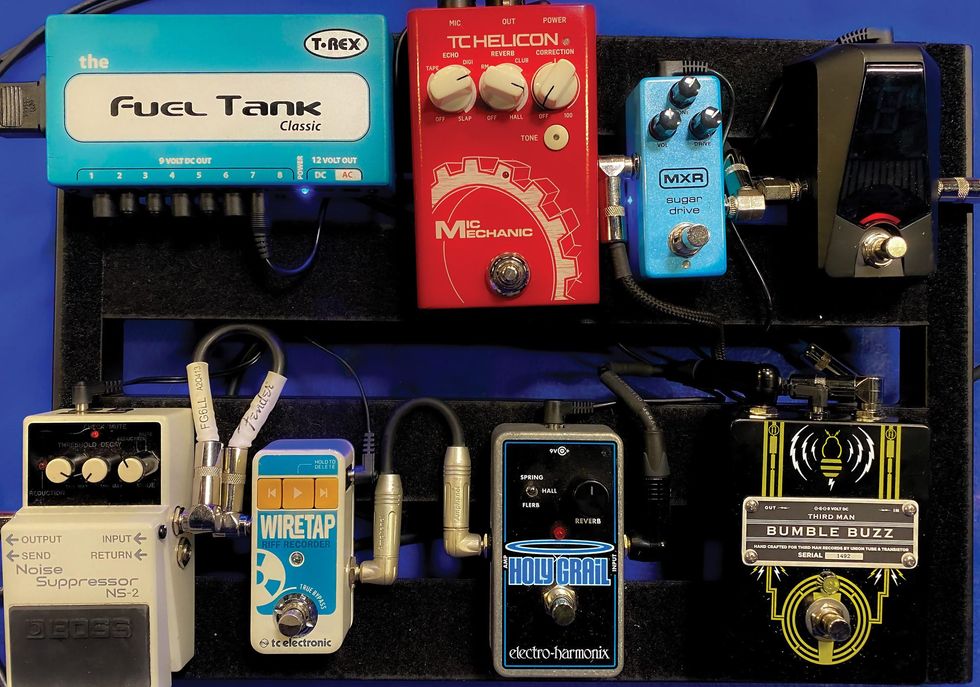
Always-on pedals include her Electro-Harmonix Holy Grail and MXR Sugar Drive, while the Third Man Bumble Fuzz gifted to her by Jack White avails stinging solo sounds (the Boss NS-2 Noise Suppressor is handy for reducing unwanted fuzz buzz). She’s also got a TC Helicon Mic Mechanic for vocal reverb, and a TC Electronic Wiretap for recording song ideas. Everything is powered by a T-Rex Fuel Tank Classic, and tuning is monitored with a Korg Pitchblack.
Rig Rundown - Olivia Jean
The Sword’s Kyle Shutt
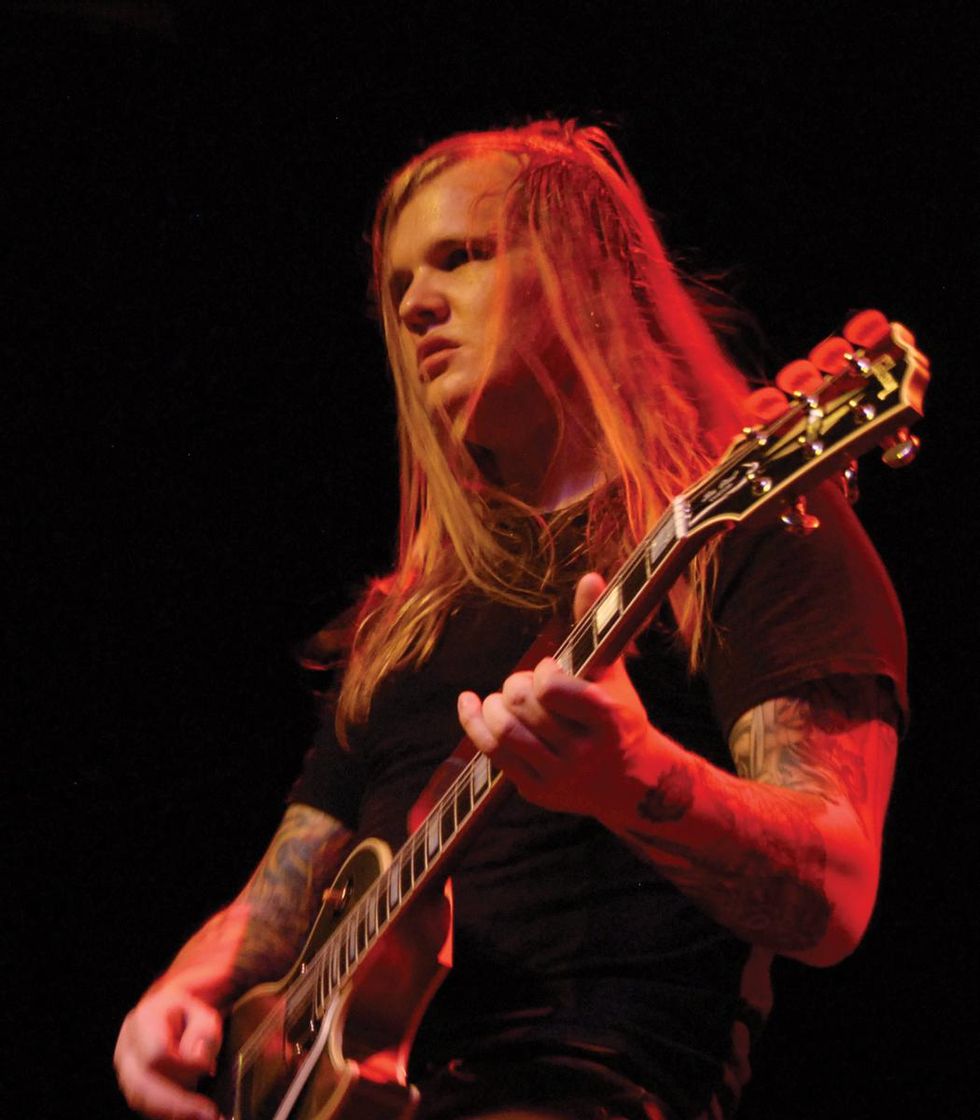
Kyle Shutt’s pedal playland keeps it classic.
Kyle Shutt's Pedalboard
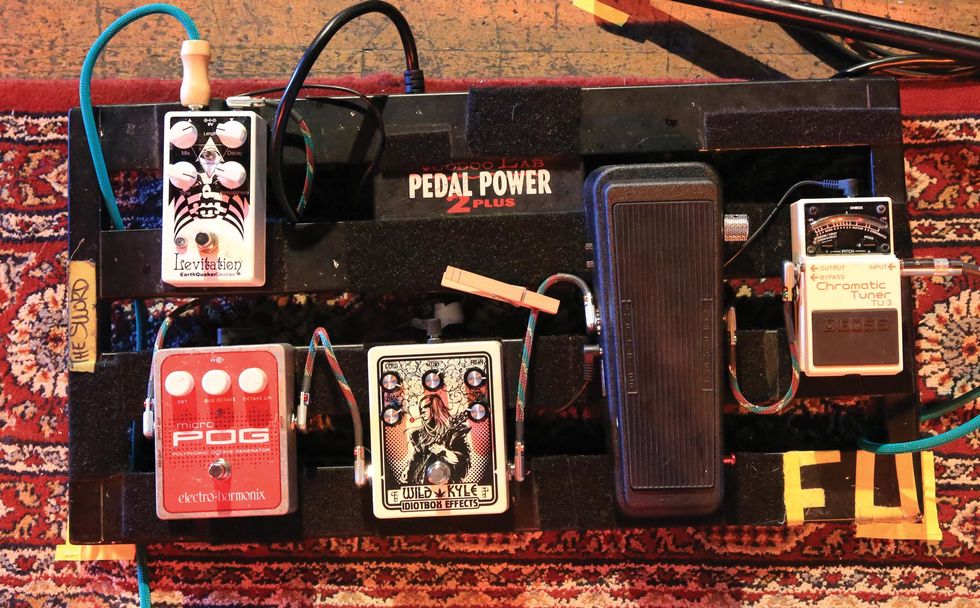
His pedal playland just a Dunlop Cry Baby 95Q wah, a signature Idiotbox Effects Wild Kyle distortion, an Electro-Harmonix Micro POG, an EarthQuaker Devices Levitation reverb, and a Boss TU-3 tuner. Nearly every square inch of J.D. Cronise’s flight-friendly board is filled with an effect. His guitars hit a TC Electronic PolyTune 3, then a pair of oddballs—a DigiTech Drop and an Electro-Harmonix Freeze—then basics like a Way Huge Conspiracy Theory overdrive, an EarthQuaker Devices Tone Job, MXR Phase 90 and Carbon Copy pedals, an EHX Holy Grail, and a Rocktron HUSH.
The Sword's J.D. Cronise
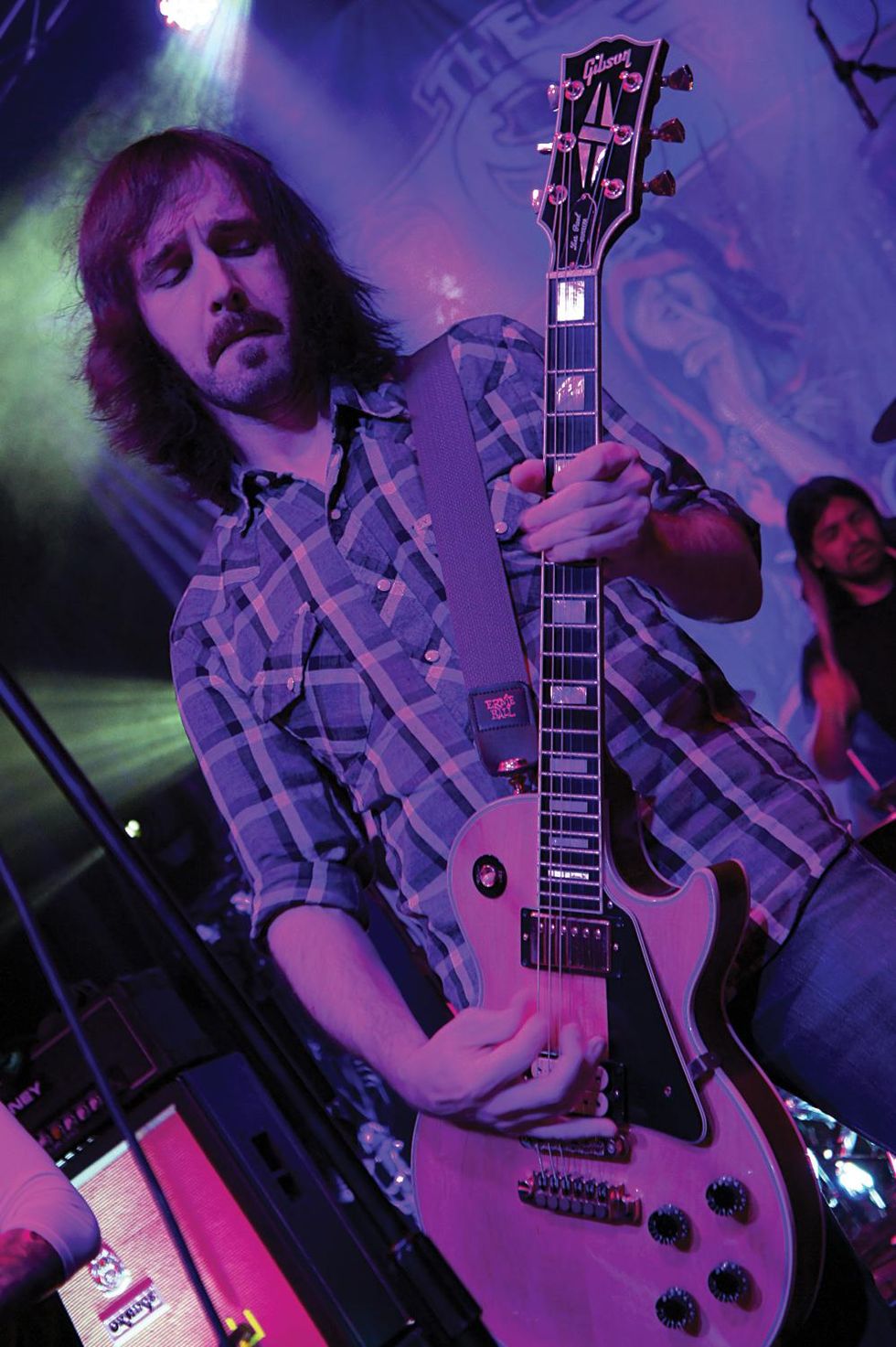
J.D. maximizes his flight-friendly board by filling nearly every square inch with an effect.
J.D. Cronise's Pedalboard
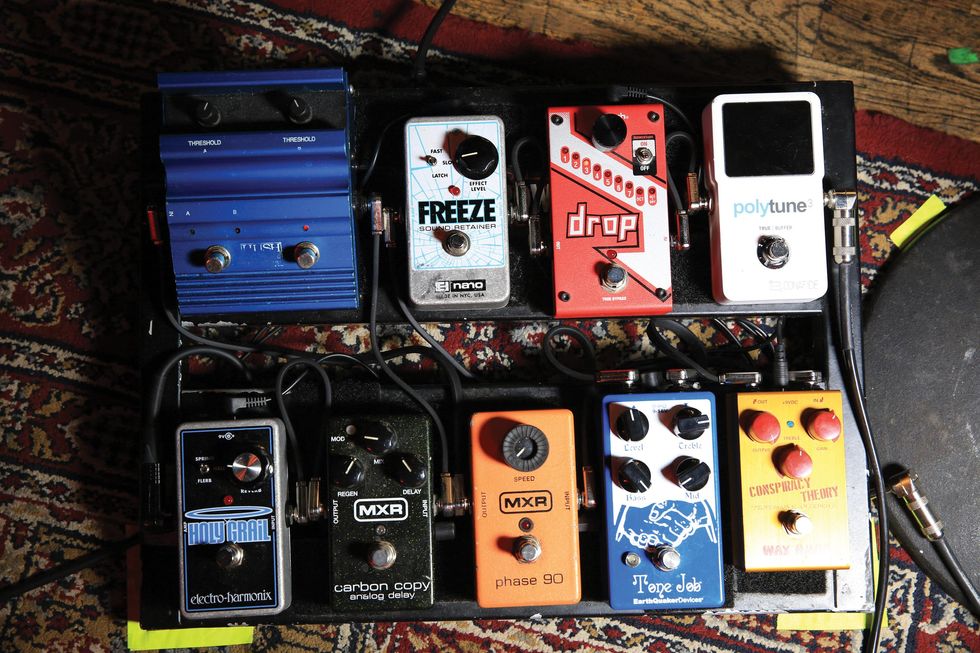
His guitar hits the TC Electronic PolyTune 3 before reaching a pair of necessary oddballs—the aforementioned DigiTech Drop and an Electro-Harmonix Freeze. The bottom row contains the basic food groups for most rockers: Way Huge Conspiracy Theory (drive), EarthQuaker Devices Tone Job (EQ), MXR Phase 90 (modulation), MXR Carbon Copy (delay), and EHX Holy Grail (reverb). The Rocktron HUSH pedal helps control any unwanted noises and buzzing.
Rig Rundown: The Sword [2021]
Steve Earle
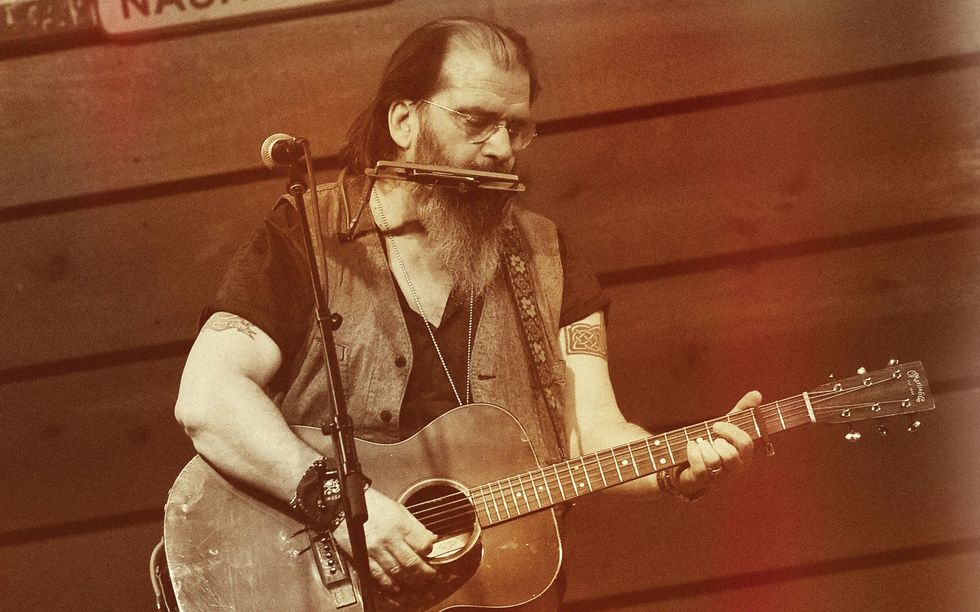
Folk-rock activist Steve Earle’s guitar signal first hits a Boss TU-3 tuner before running into a pair of MXR Carbon Copy analog delays (one set as a 1-second delay for a pre-song rippling effect, and one for slapback) and a Fulltone Full-Drive 2 with two levels of gain. A Voodoo Lab Pedal Power 2 supplies the juice.
Steve Earle's Pedalboard
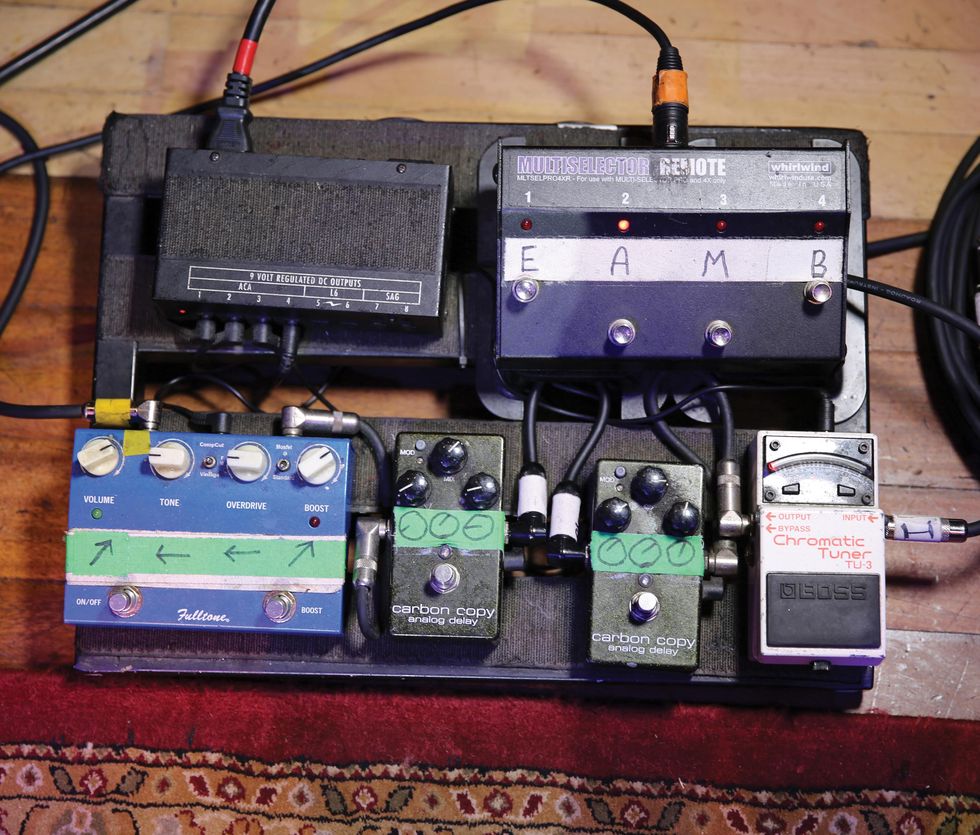
Chris Masterson
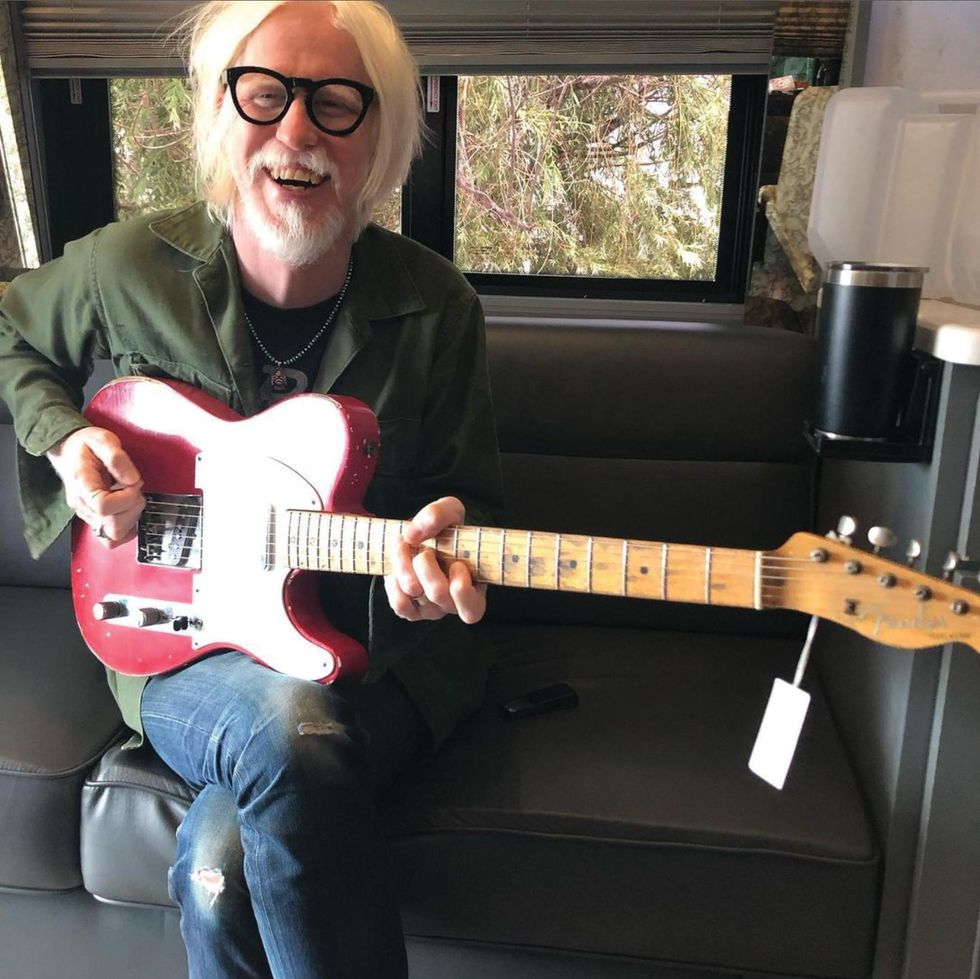
Chris Masterson's Pedalboard
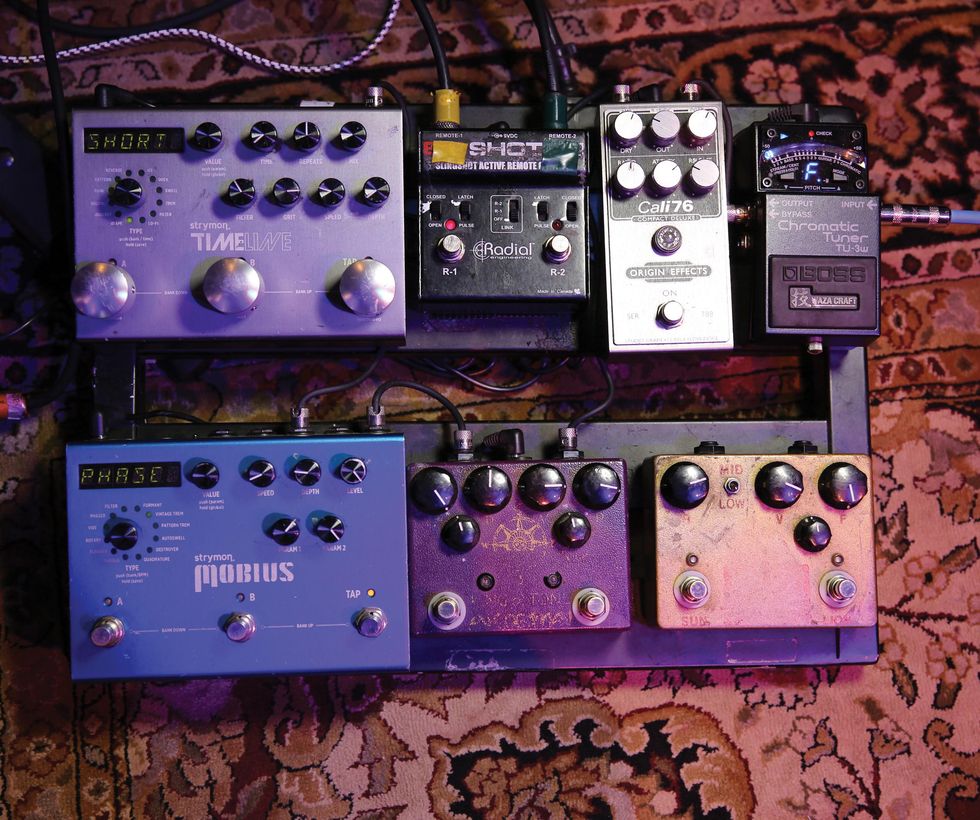
The first stop on sideman Chris Masterson’s pedalboard is an Analog Man Sun Lion. From there the signal hits a Boss TU-3w Waza Craft tuner, an Origin Effects Cali76 compressor, an Analog Man King of Tone, and two Strymons—a Mobius and a TimeLine. A Strymon Zuma supplies power, while a Radial BigShot SW2 controls amp reverb and tremolo.
Rig Rundown: Steve Earle and the Dukes
Torres’s Mackenzie Scott

Little on Mackenzie Scott’s pedalboard could be described as subtle or “transparent”—even her delays and reverbs accentuate the weird.
Mackenzie Scott's Pedalboard
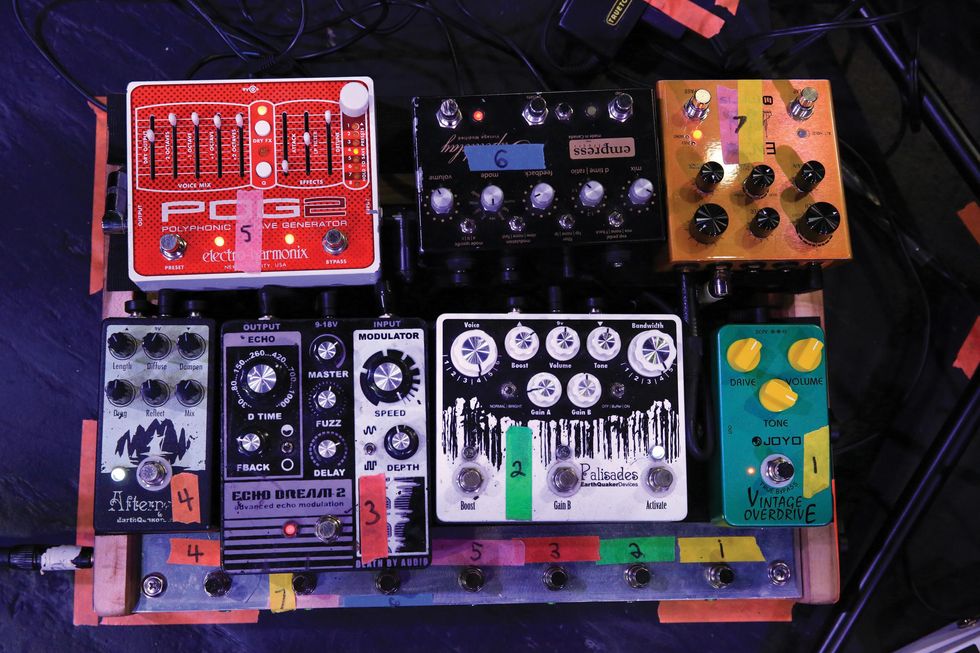
Filth and fury come courtesy of a Joyo Vintage Overdrive and an EarthQuaker Devices Palisades. Next is a Death By Audio Echo Dream 2 modulation/delay/boost/fuzz, which Scott says is her most-used pedal. An EarthQuaker Afterneath provides deep, ambient reverbs, which she often beefs up with faux-synth vibes from an Electro-Harmonix POG2. (Another favorite application for the POG2 is pulling its attack all the way down and dramatically gliding into the notes.) Scott uses an Empress Vintage Modified Superdelay to sprinkle in modulation, reverse delay, and compression, as well as tape-echo-like grit. The last pedal on her board is a Meris Enzo, which she half-jokingly says is equal parts inspiring and frustrating. “I have a hard time getting it under control and taming the beast, but that’s what I love about it.”
Rig Rundown: Torres
Mackenzie Scott (aka Torres) likes a good juxtaposition. Her music is a tightrope act between vulnerability and violence. Scott’s lyrics often reflect intros...IDLES’ Mark Bowen
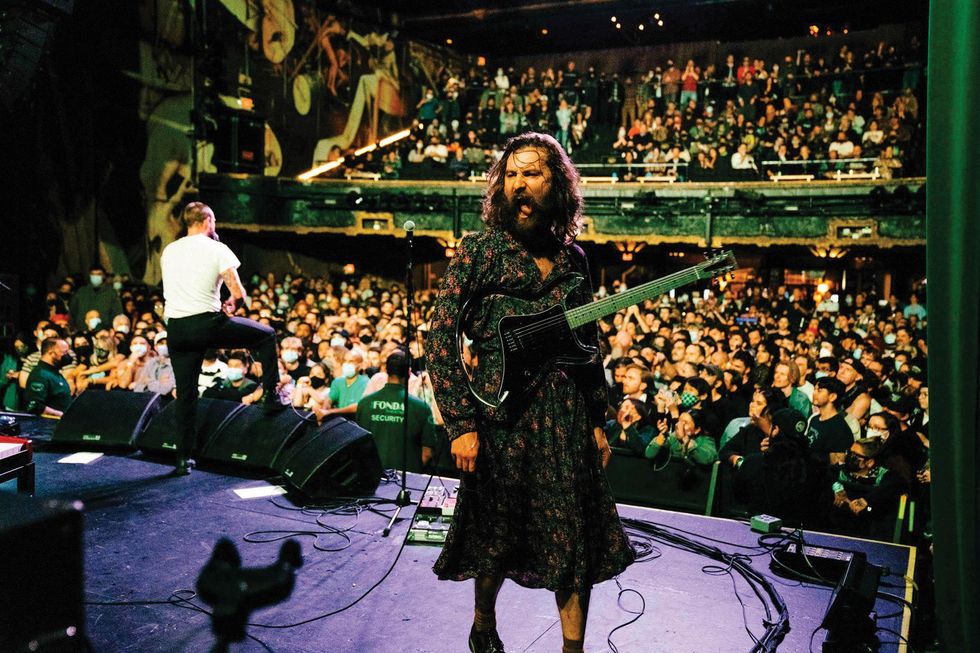
To accomplish all the fantastic and outrageous tones captured on Idles’ last two records, Bowen brings a whole cast of characters to accomplish that feat.
Mark Bowen's Pedalboards
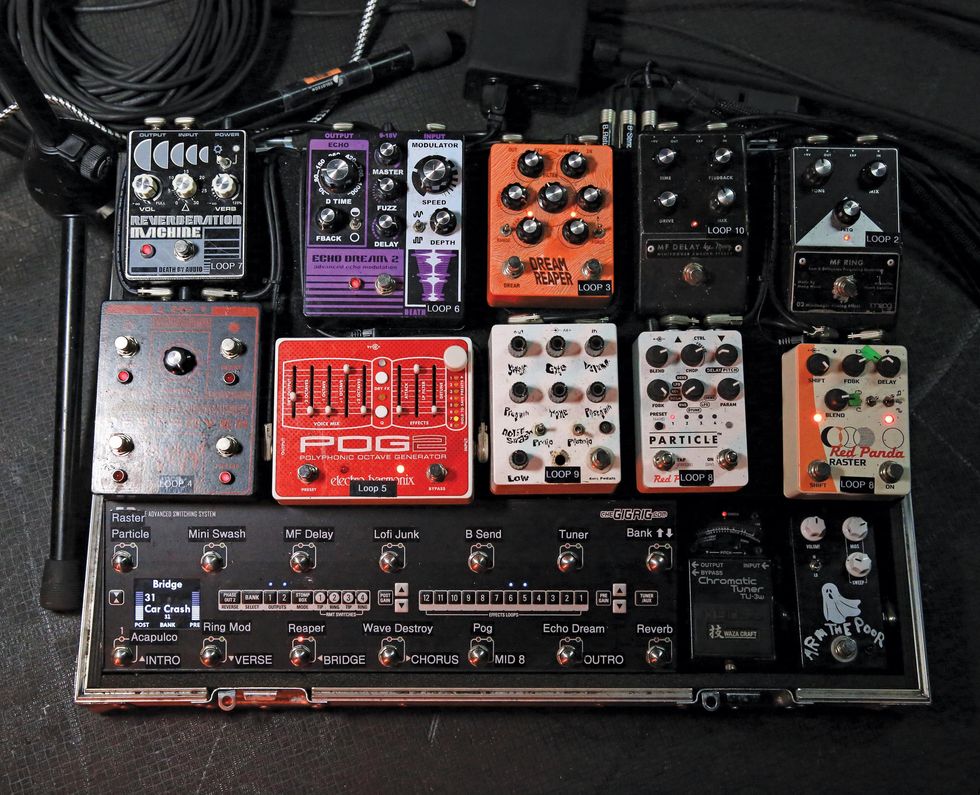
Mark Bowen’s main board features two Death By Audio units—a Reverberation Machine and an Echo Dream 2—an Adventure Audio Dream Reaper, a pair of Moogs—an MF Delay and an MF Ring—a Death By Audio Waveformer Destroyer, an Electro-Harmonix POG2, a 4ms Pedals Mini Swash Full (which serves up fuzz, distortion, and self-oscillating LFO craziness), two Red Pandas—a Particle and a Raster—and a JHS Haunting Mids. A Boss TU-3w Waza Craft tuner keeps his guitars in check and a GigRig G3 controls preset changes.
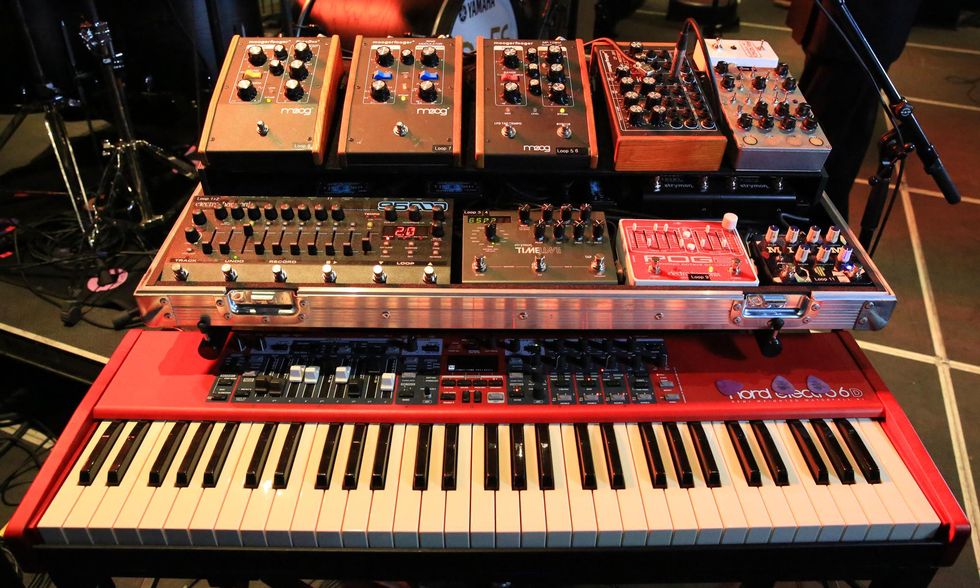
Near his amps, Bowen has another batch of tone morphers. Up top he’s got a 4-pack of Moog Moogerfooger monsters—MF-107 FreqBox, MF-102 Ring Modulator, MF-108M Cluster Flux, and a CP-251 Control Processor—and another no-name glitch/synth device. Below those we have an Electro-Harmonix 95000 Stereo Looper, a Strymon TimeLine, an Electro-Harmonix POG2, and an Old Blood Noise Endeavors Minim (reverb/delay and reverse). Lastly, he has a Nord Electro 6D at his disposal. Everything is powered by GigRig Timelord power supplies, while two Strymon Iridiums handle cab emulations.
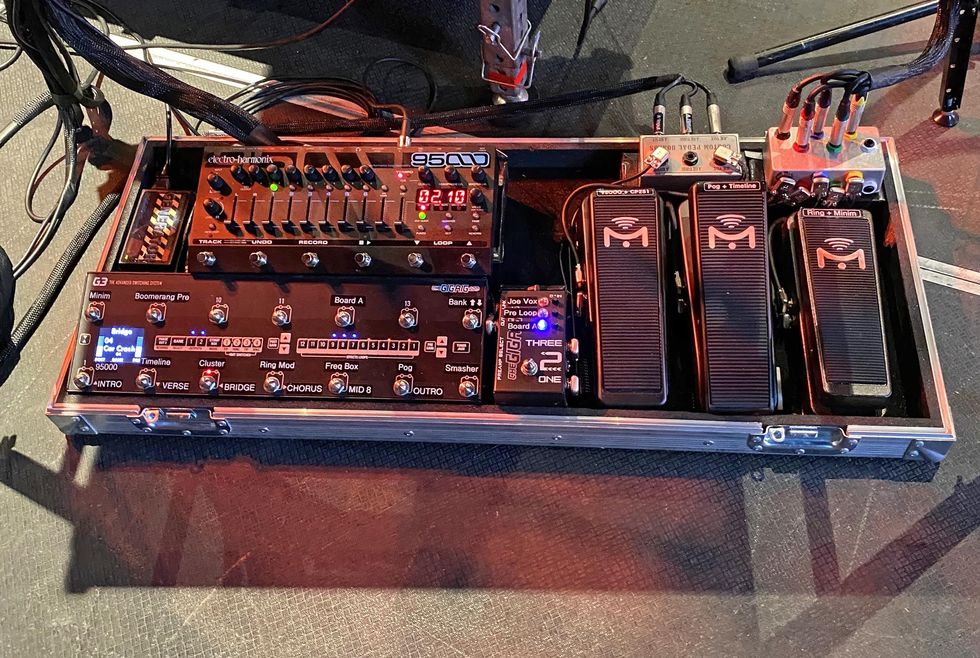
The last part of Bowen’s setup is this board under his keyboard/Moogerfooger workstation. Here, he has another GigRig G3 switcher, another Electro-Harmonix 95000 Stereo Looper, a GigRig Three2One (to help balance levels between instruments), and three Mission Engineering EP-1 expression pedals (controlling some of the effects in the previous photo).
IDLES' Lee Kiernan
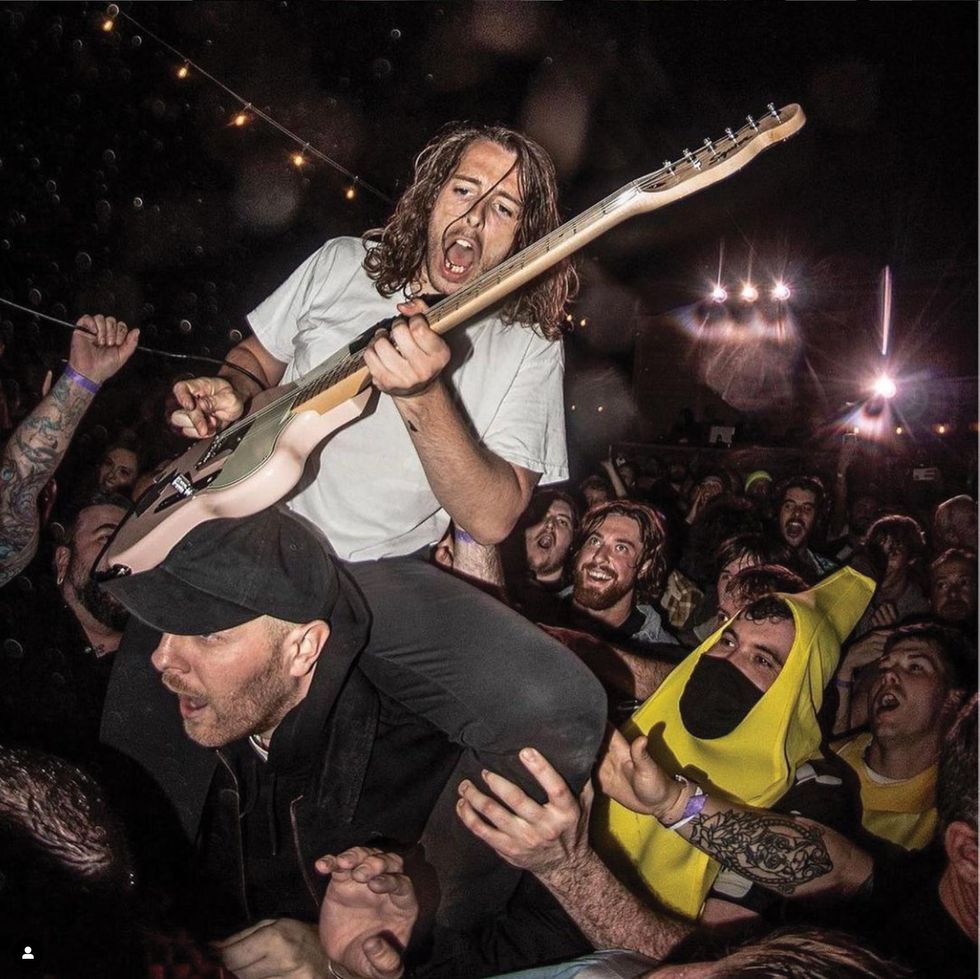
The time spent mentioning everything Kiernan does with these pedals is better served watching the Rundown, listening to Idles’ music, or attending one of their shows. But in doing our due diligence, here are the stomps that corrupt, challenge, and ravage his tone.
Lee Kiernan Pedalboard
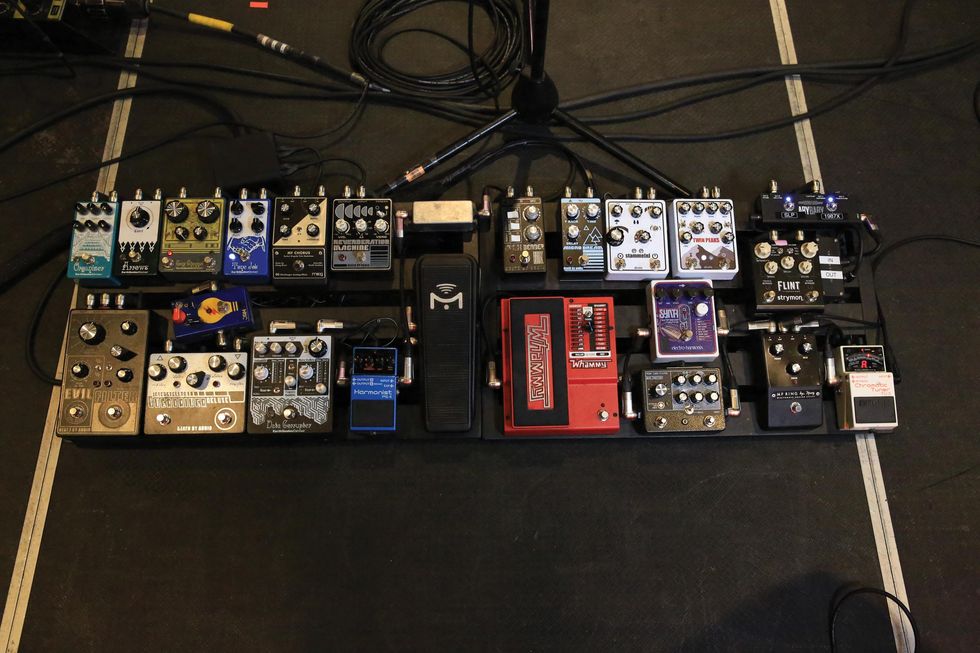
Lee Kiernan relies on (upper right) a Strymon Flint, a couple of Drolo Fx stomps—a Twin Peaks tremolo and a Stamme[n] looper/glitch delay/tape machine/sustainer/reverb—and a pair of Death By Audio devices—a Micro Dream delay and a Space Bender prototype. The bottom row of this board is also home to a DigiTech Whammy, an Electro-Harmonix Synth9, an Intensive Care Audio Vena Cava Filter, a Moog MF Ring, and a Boss TU-3 tuner. A GigRig ABY-Baby (top right) is used for amp switching. (The small black box labeled “in/out” was built by tech Gavin Maxwell so Kiernan could quickly test out a pedal without having to rip his setup apart.) The board on the left begins (lower middle of pic) with a Mission Engineering EP-1 expression pedal, a Boss PS-6 Harmonist, an EarthQuaker Devices Data Corrupter, a Death By Audio Interstellar Overdriver Deluxe, and a Death By Audio Evil Filter. The top row of this board features a quartet of EarthQuaker stomps: an Organizer polyphonic organ emulator, an Arrows preamp, a Gray Channel overdrive, and a Tone Job EQ/boost—then proceeds to a Moog MF Chorus, a Death By Audio Reverberation Machine, and a Jam Pedals TubeDreamer.
